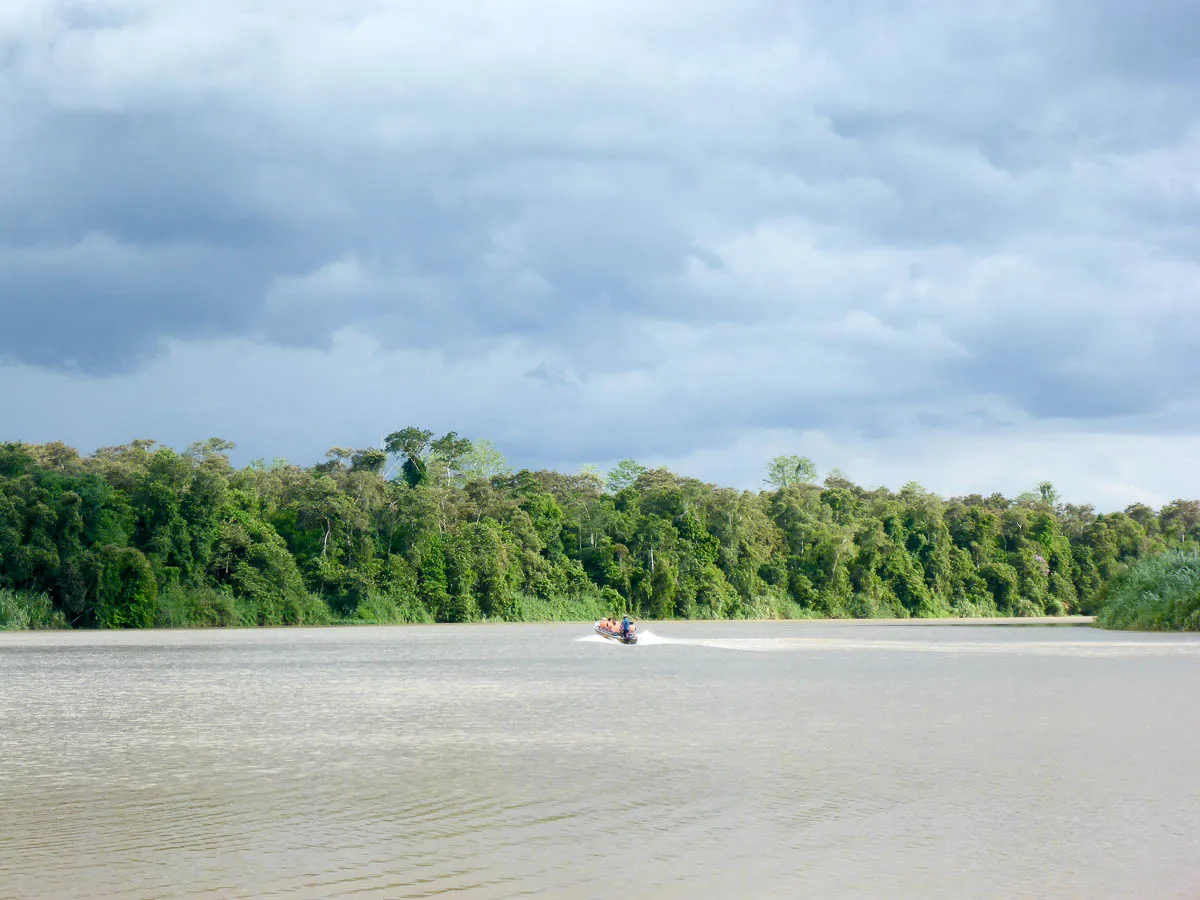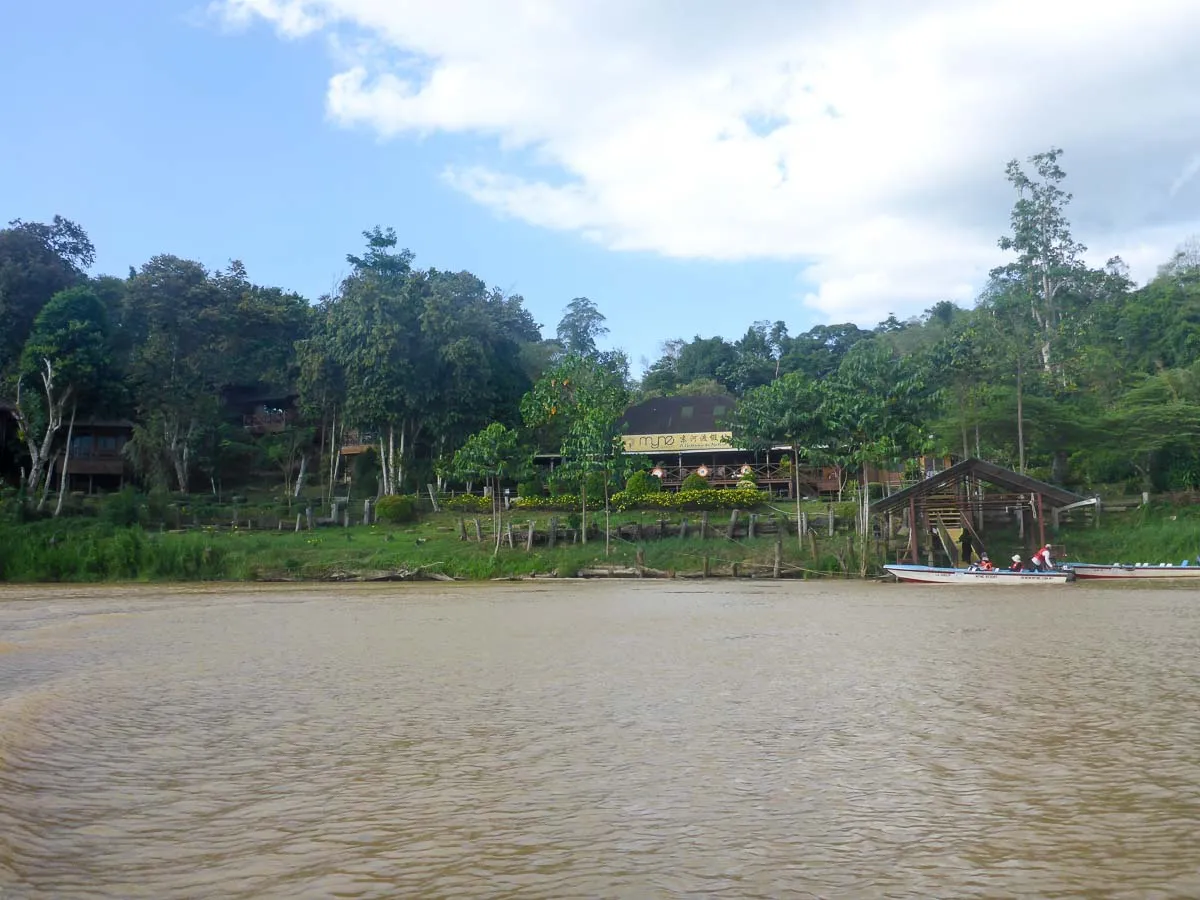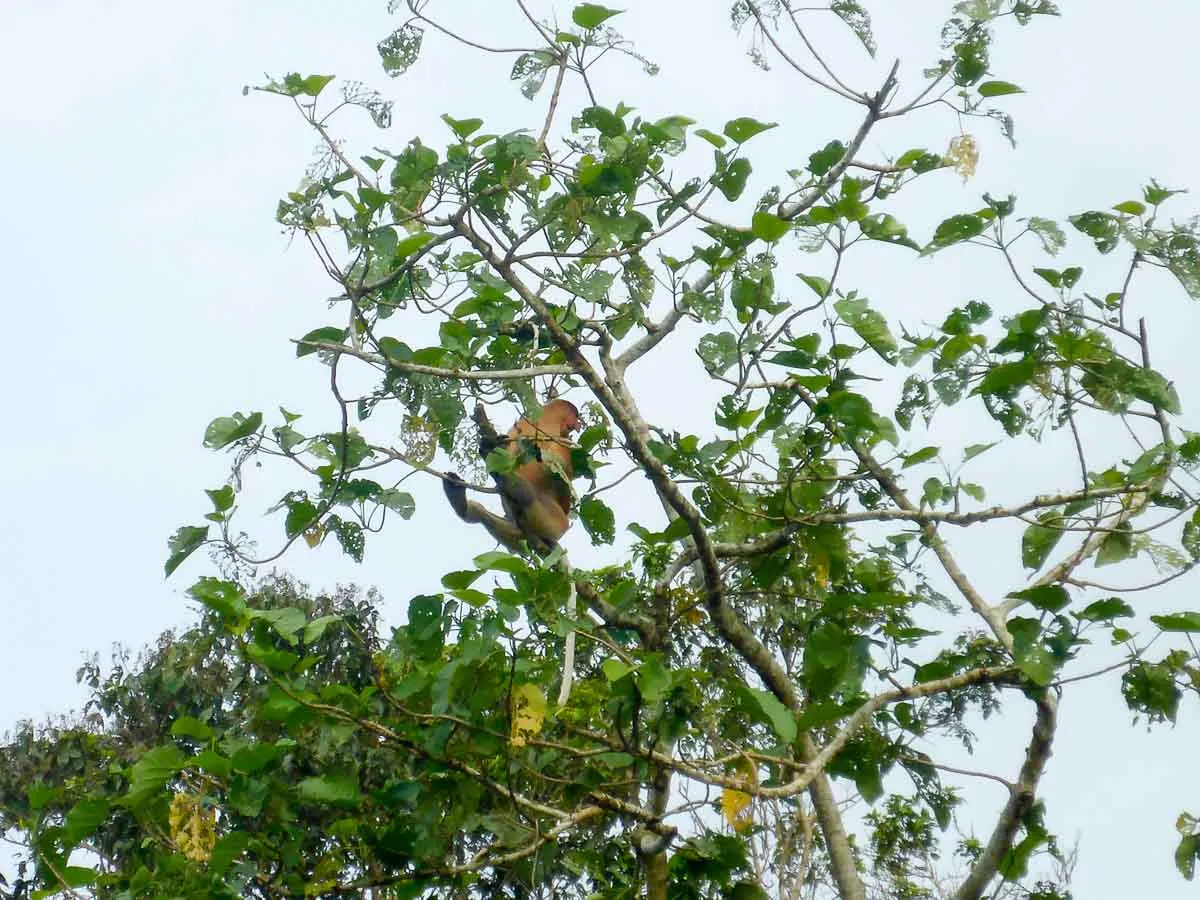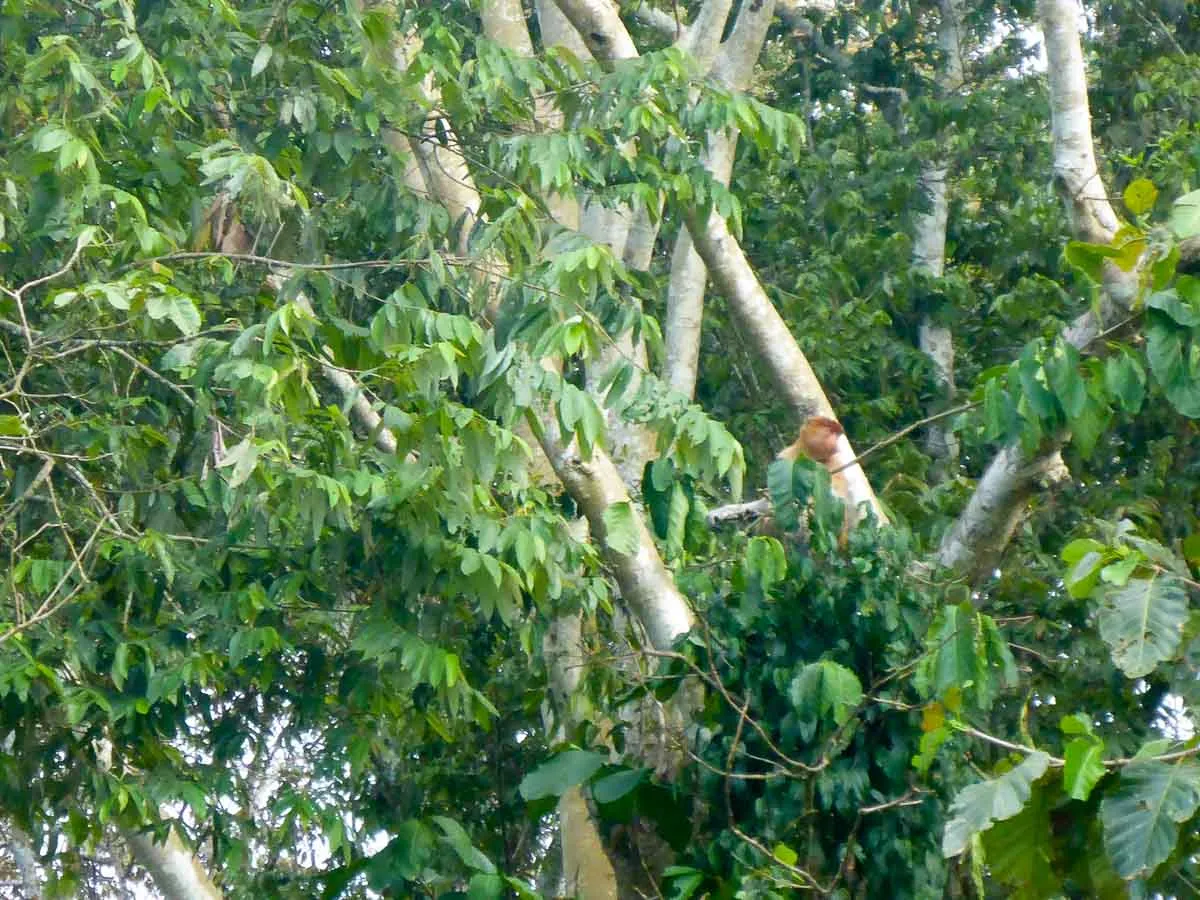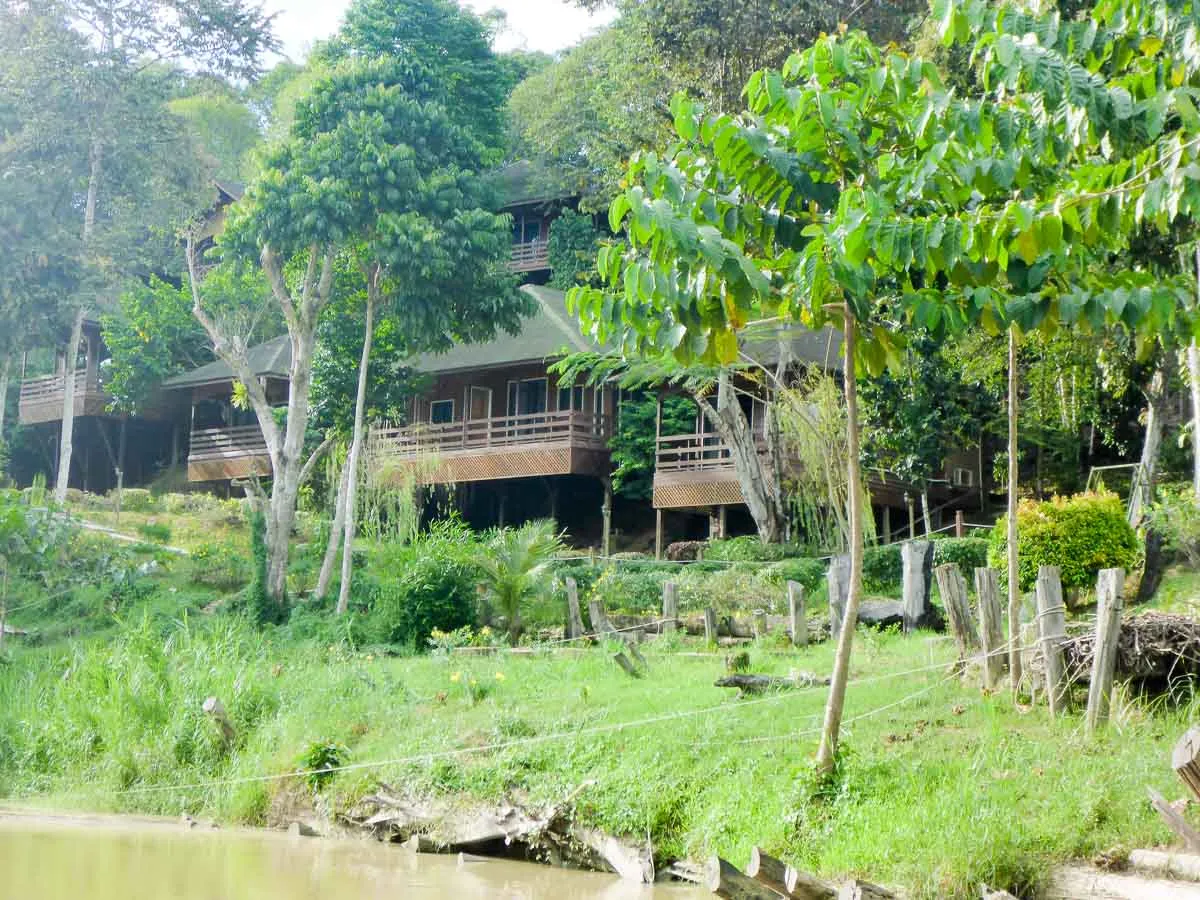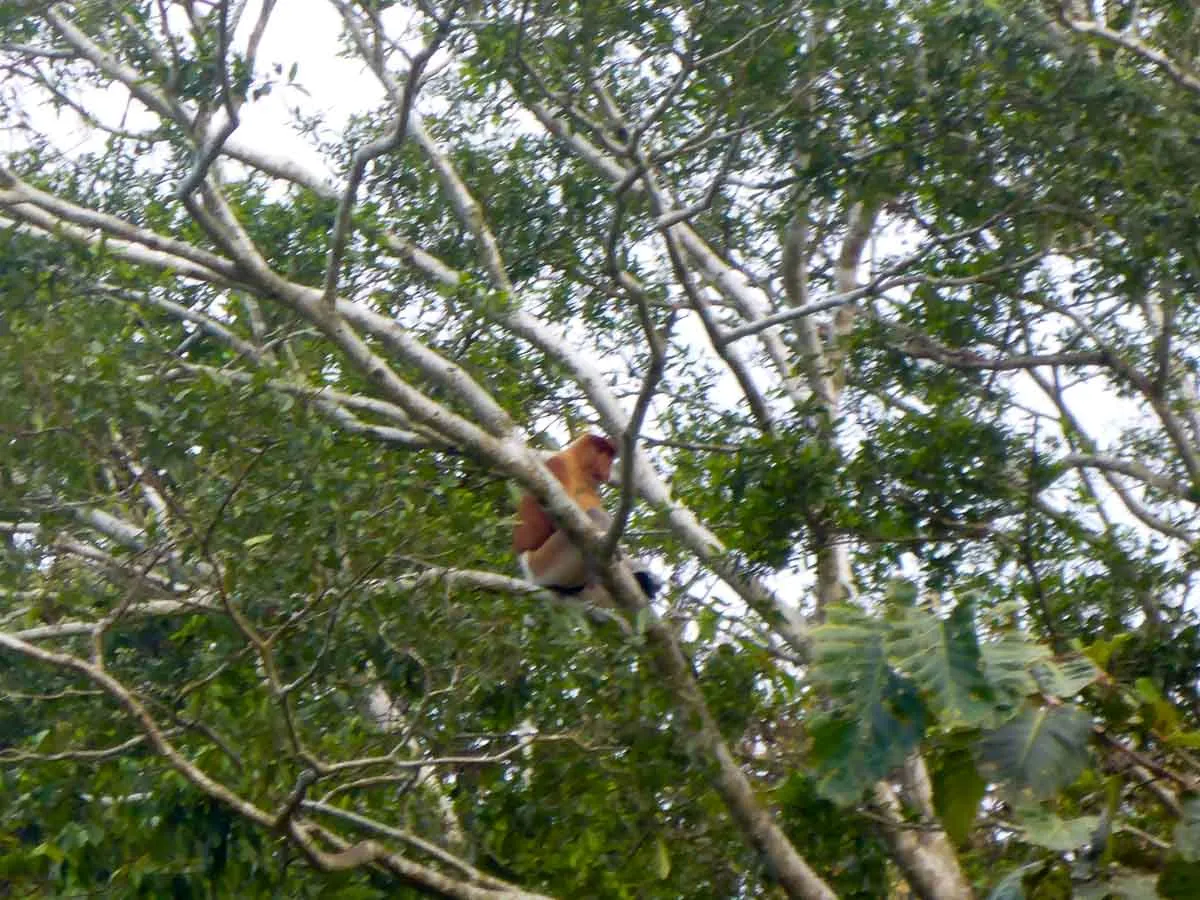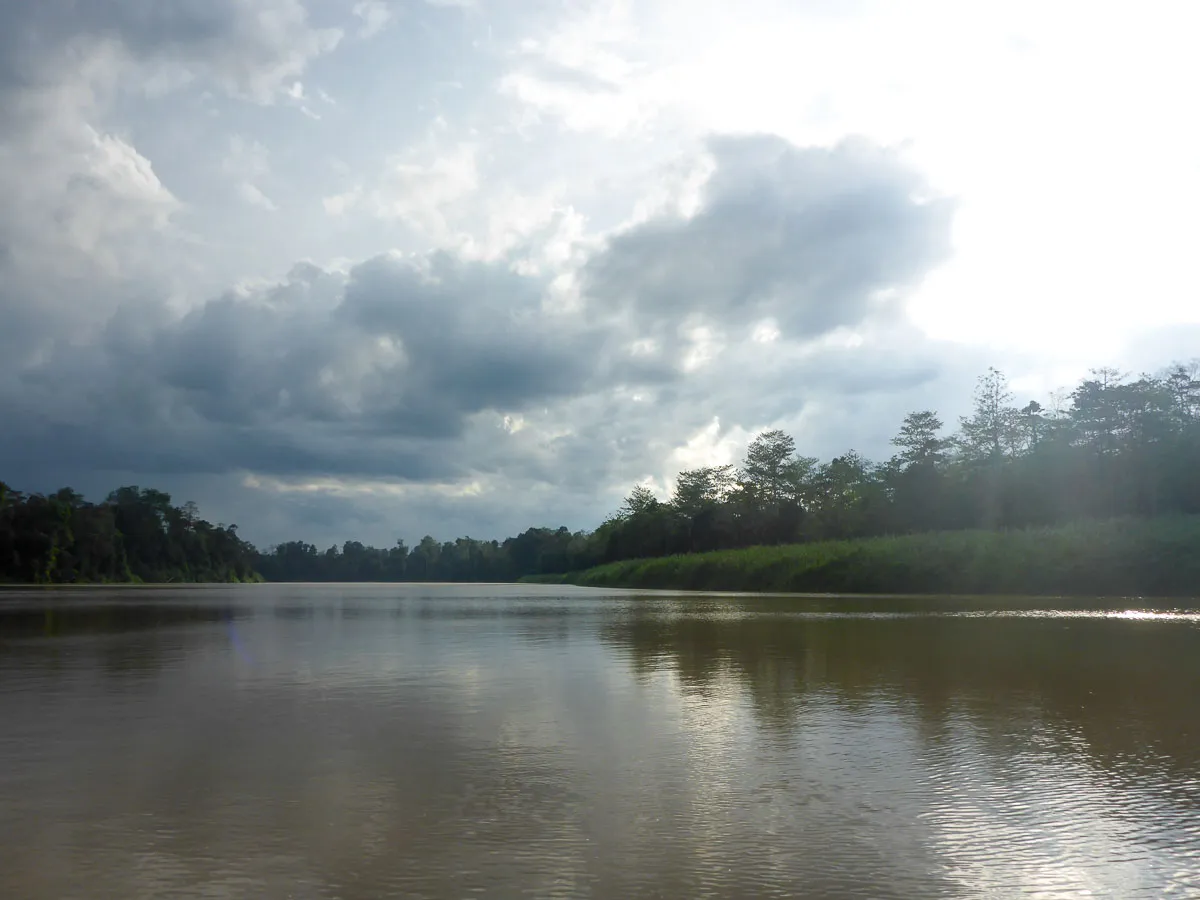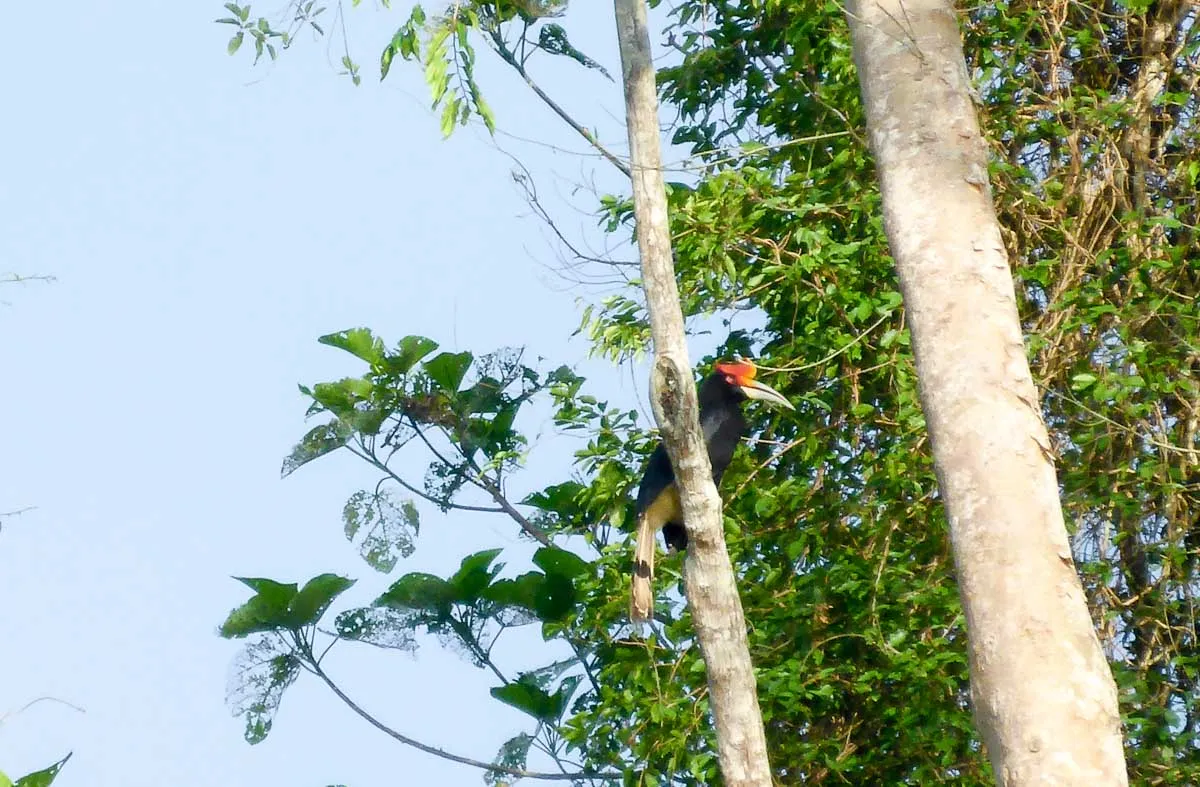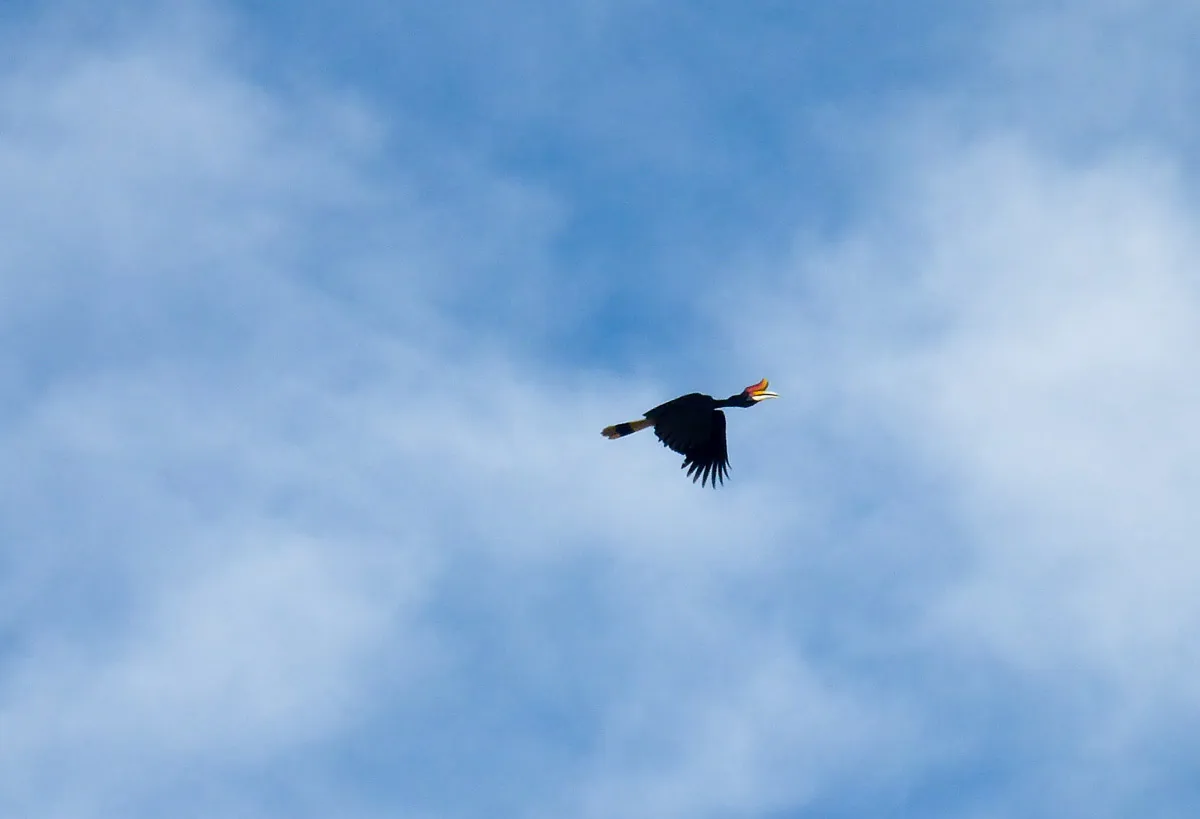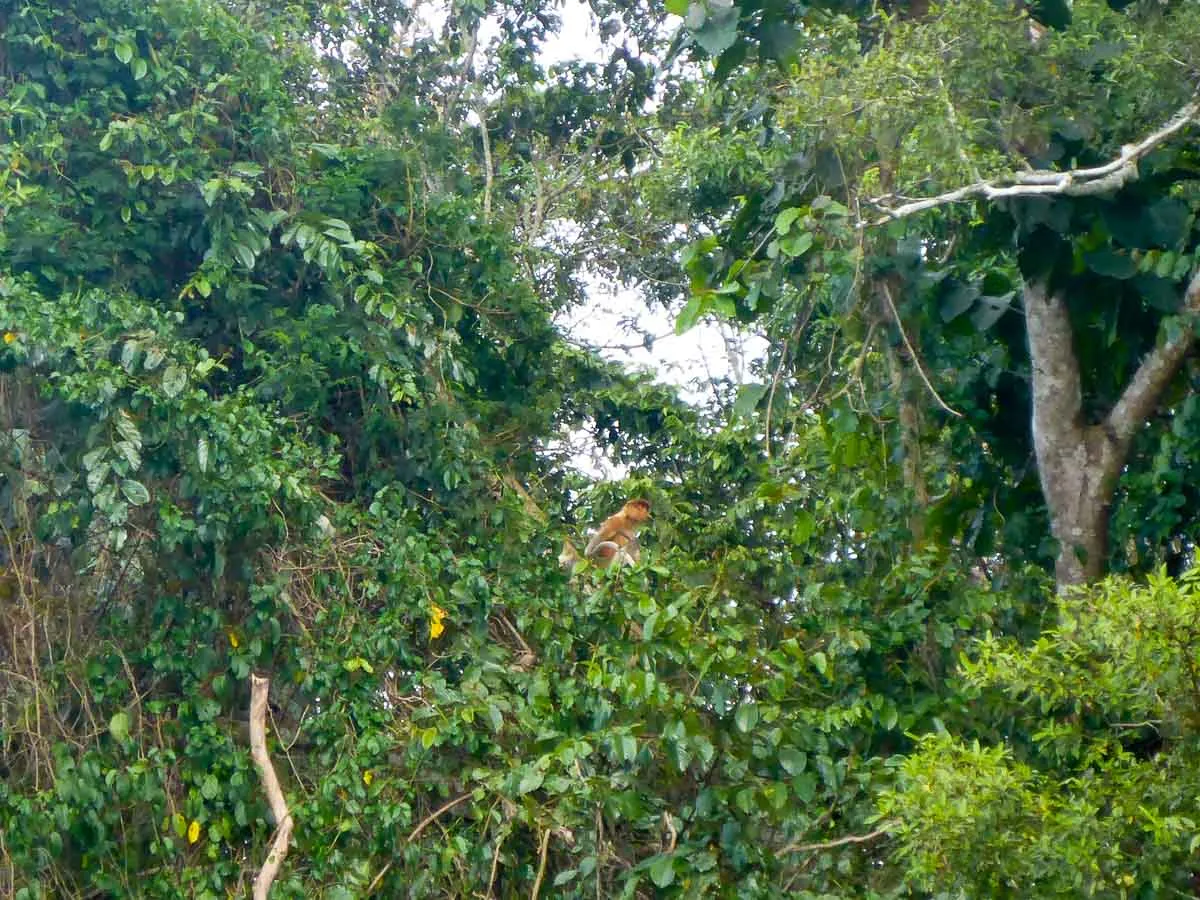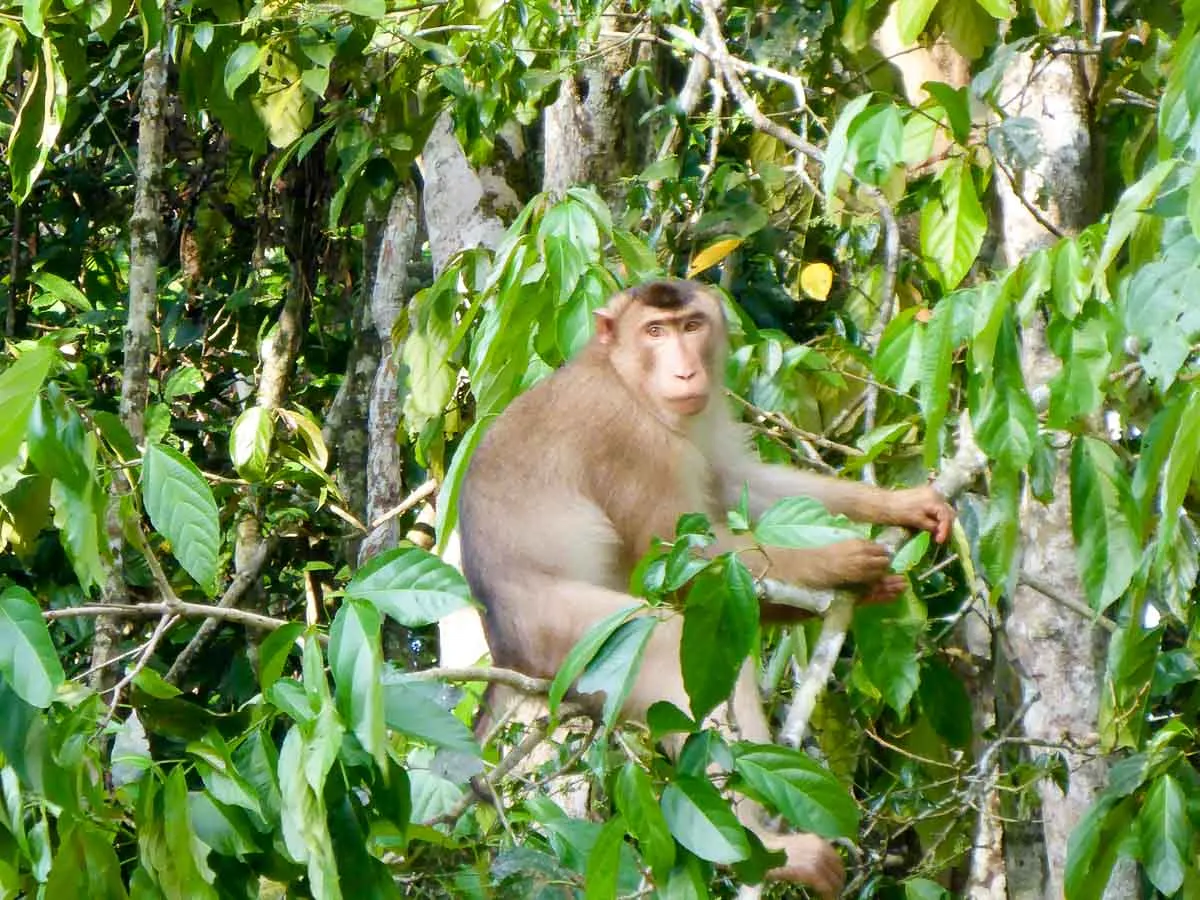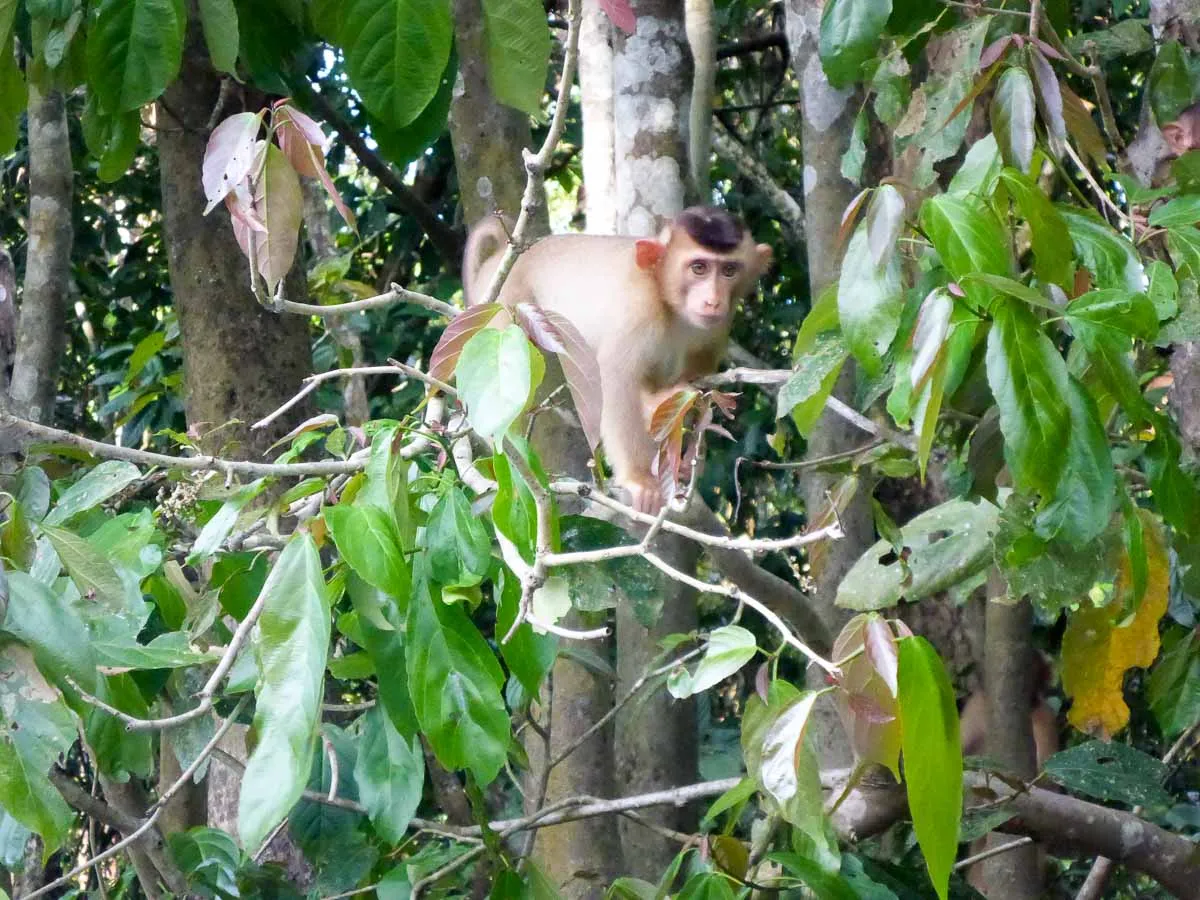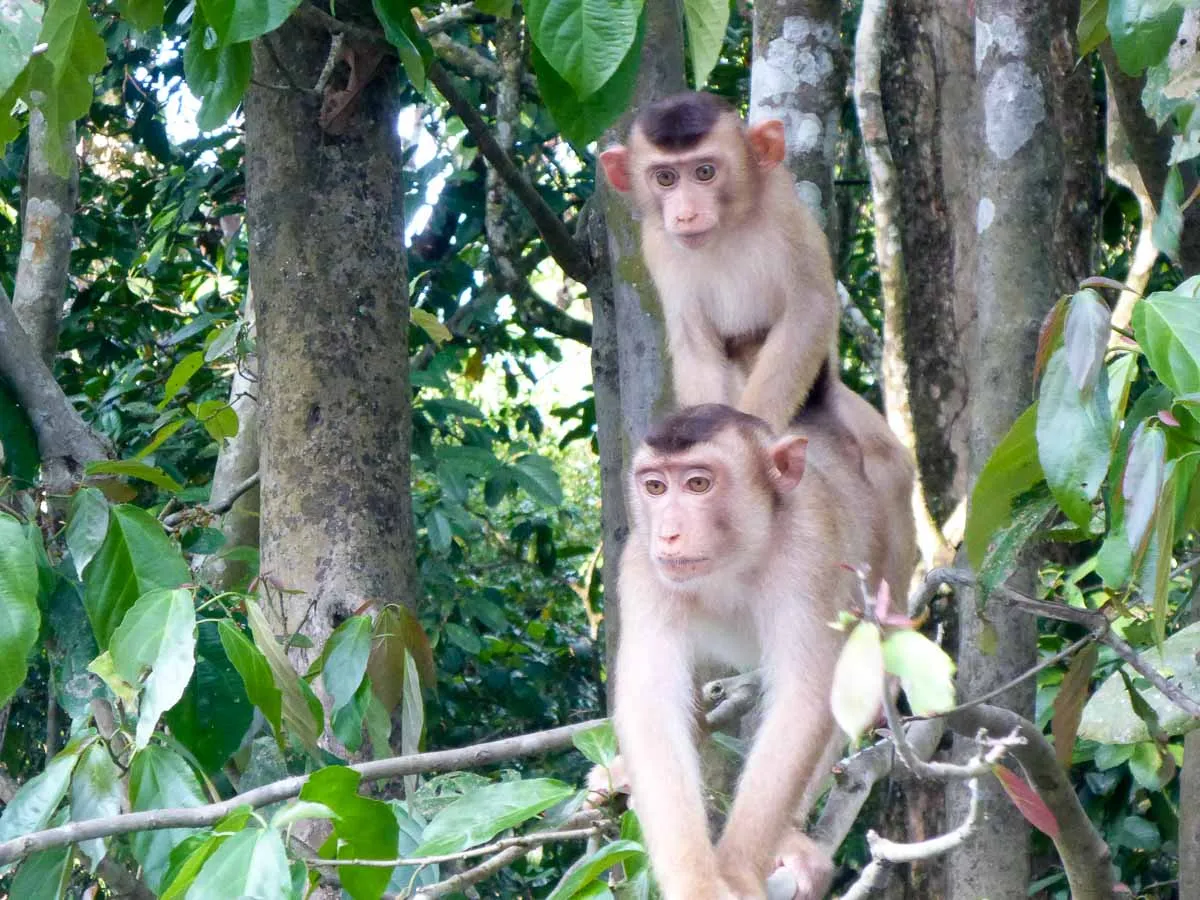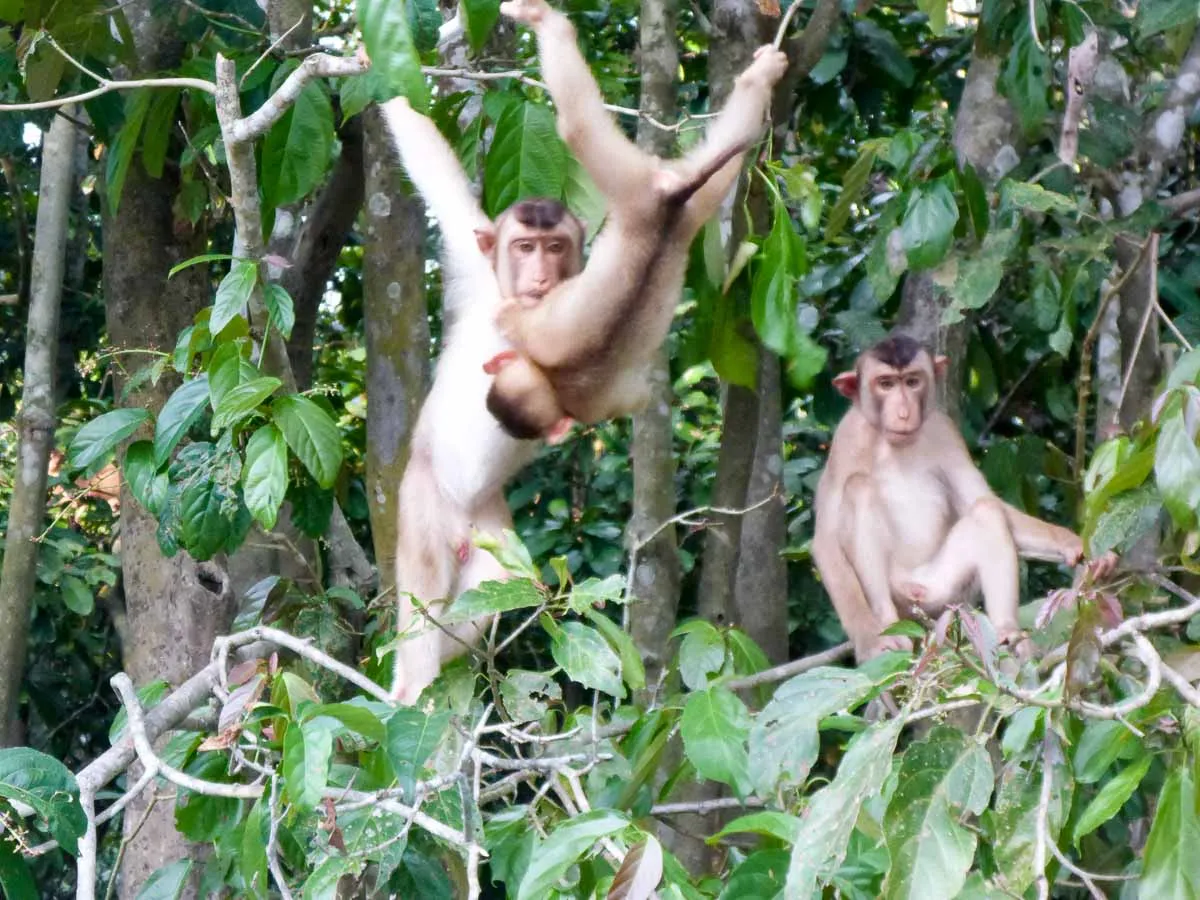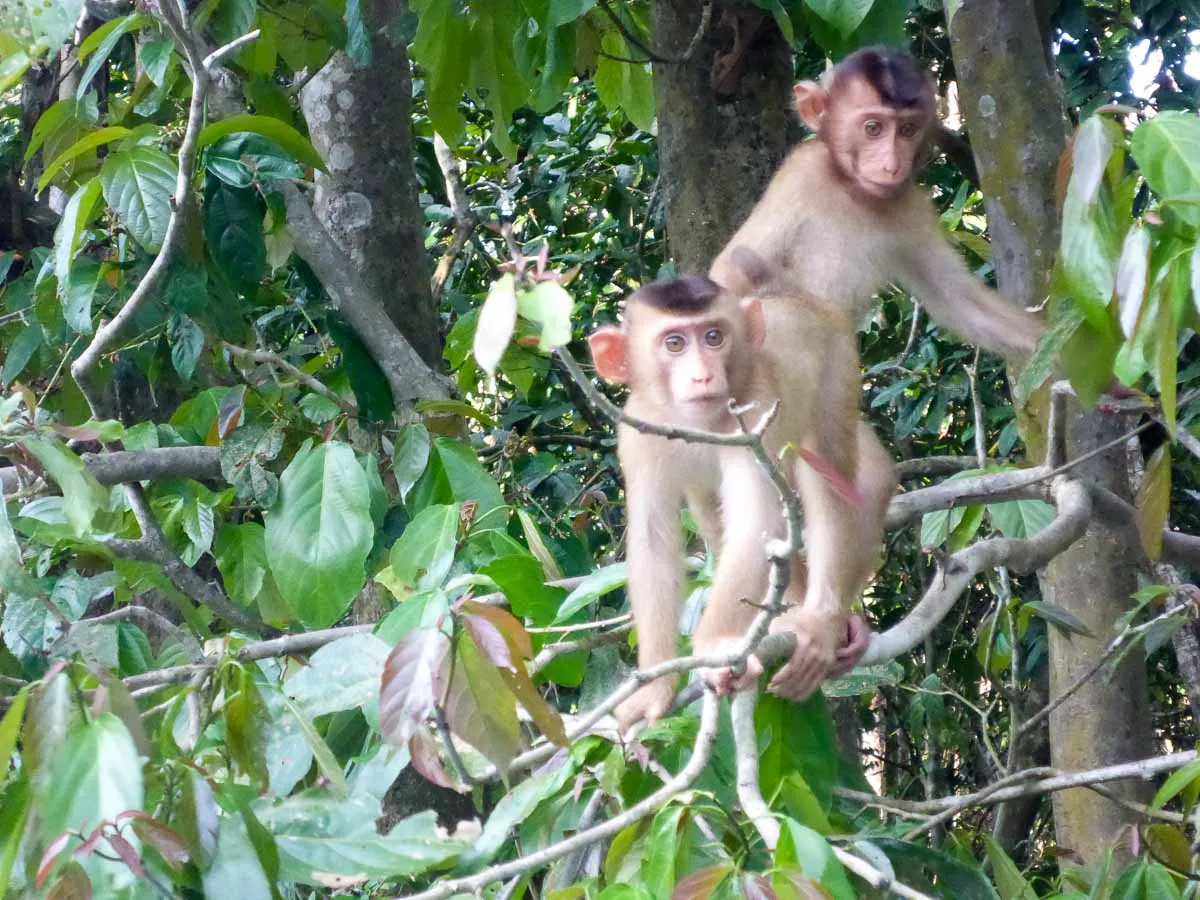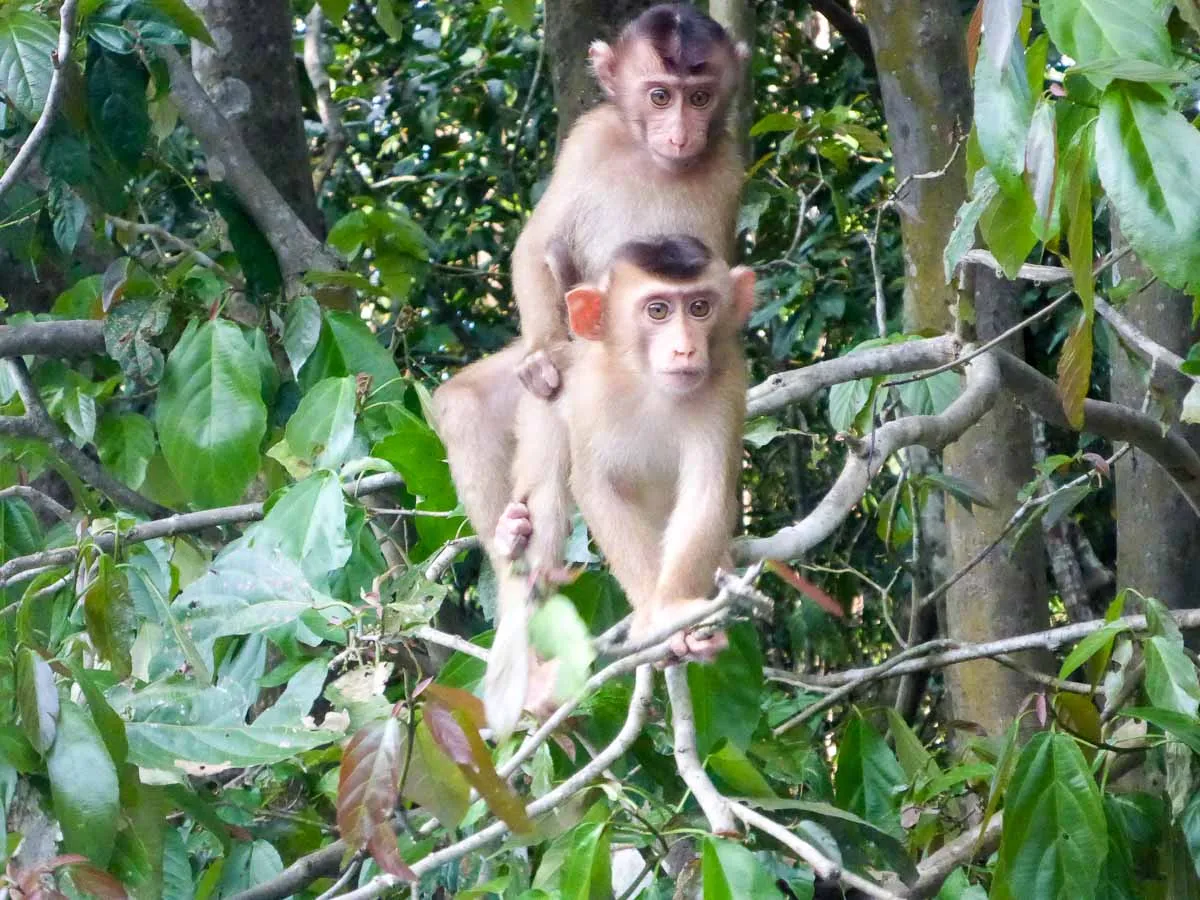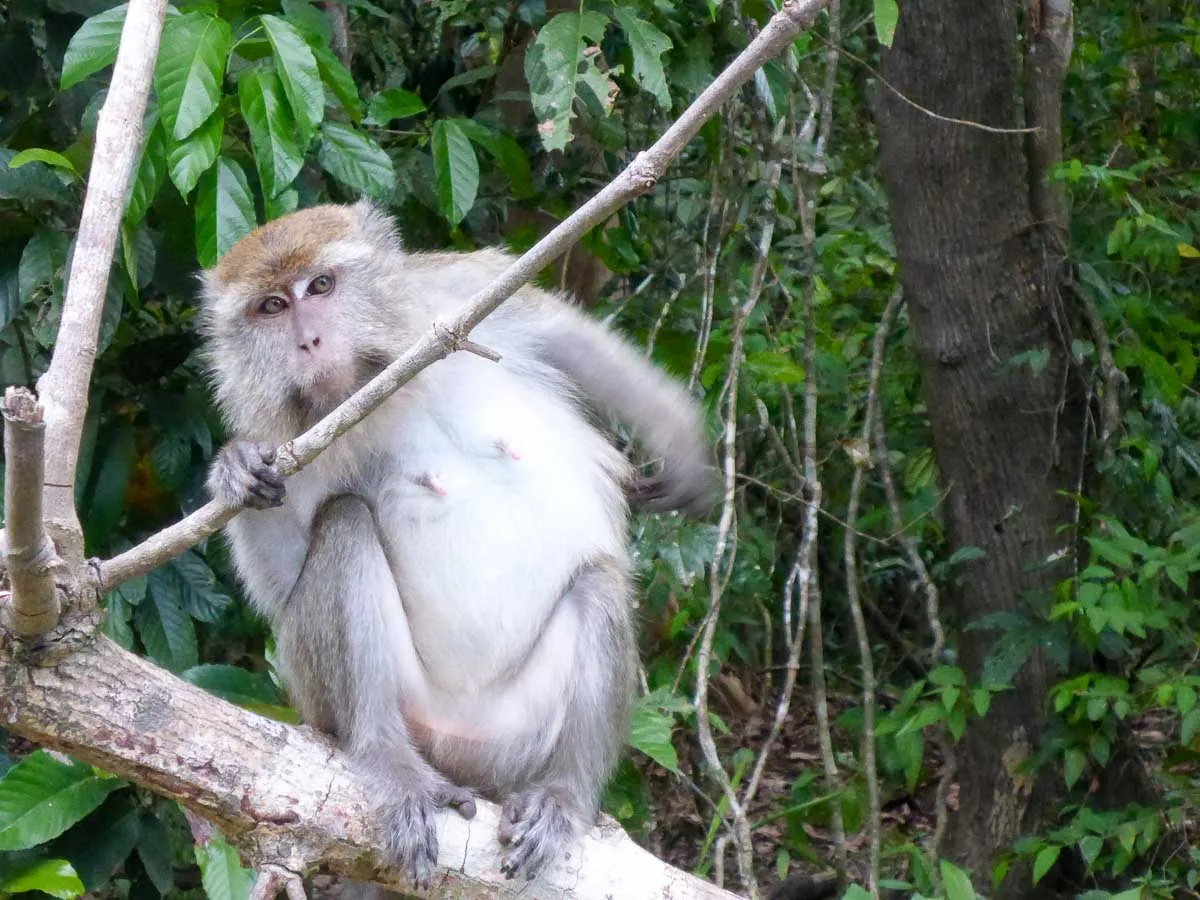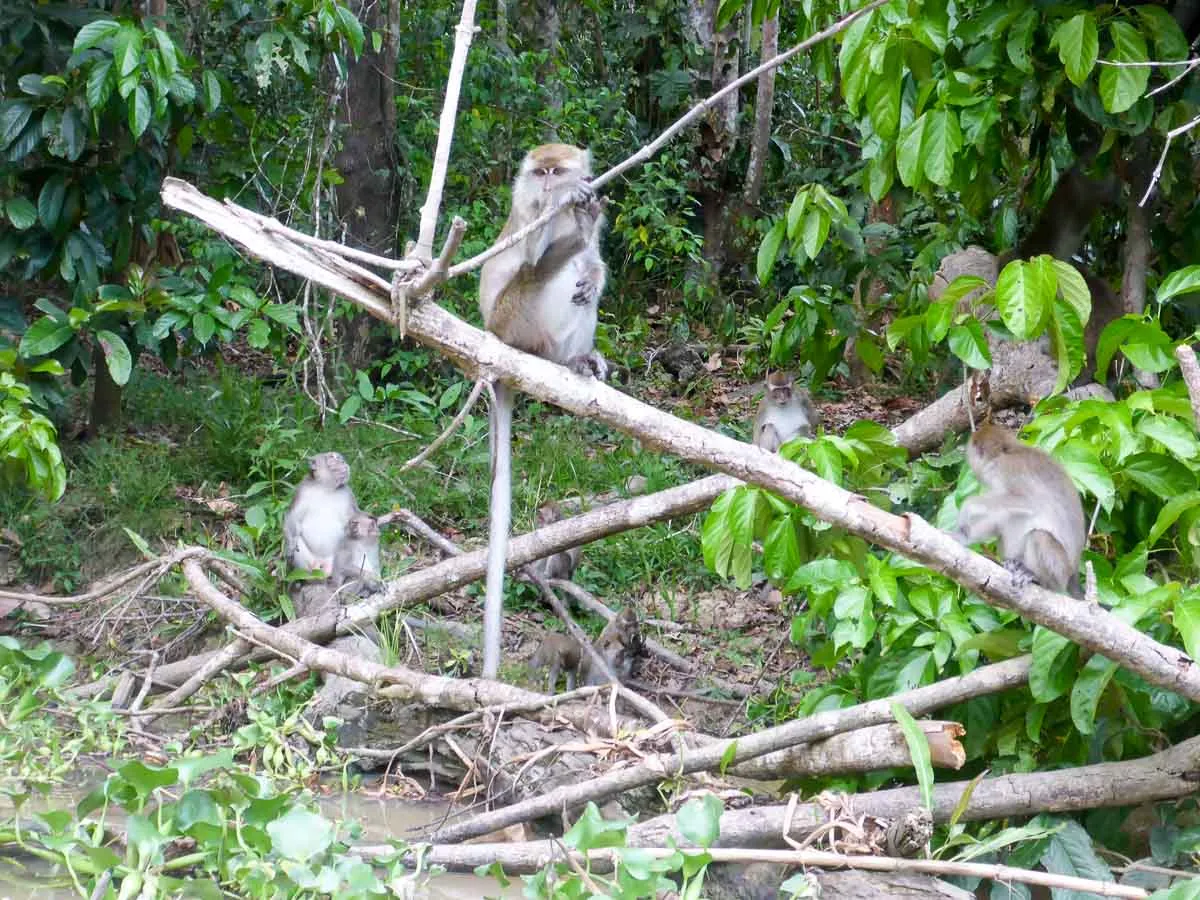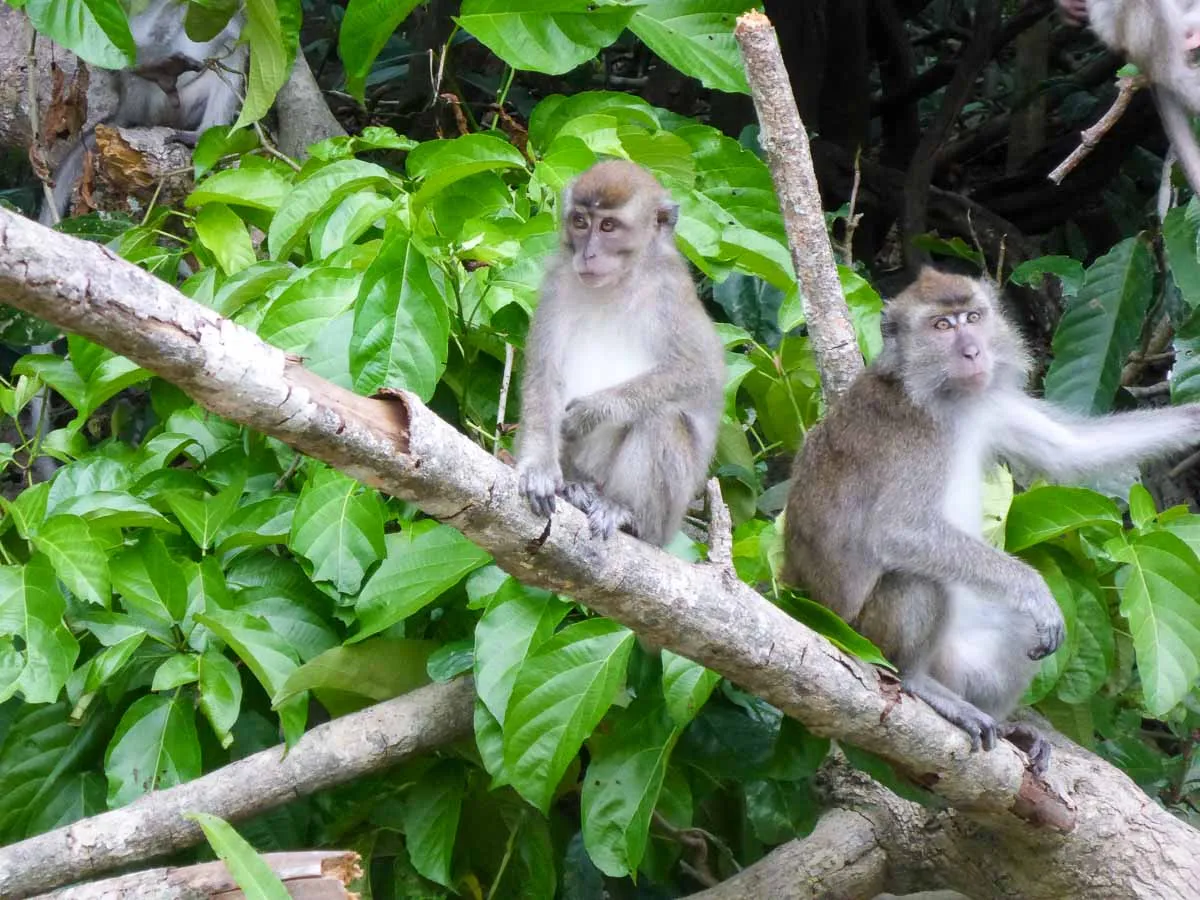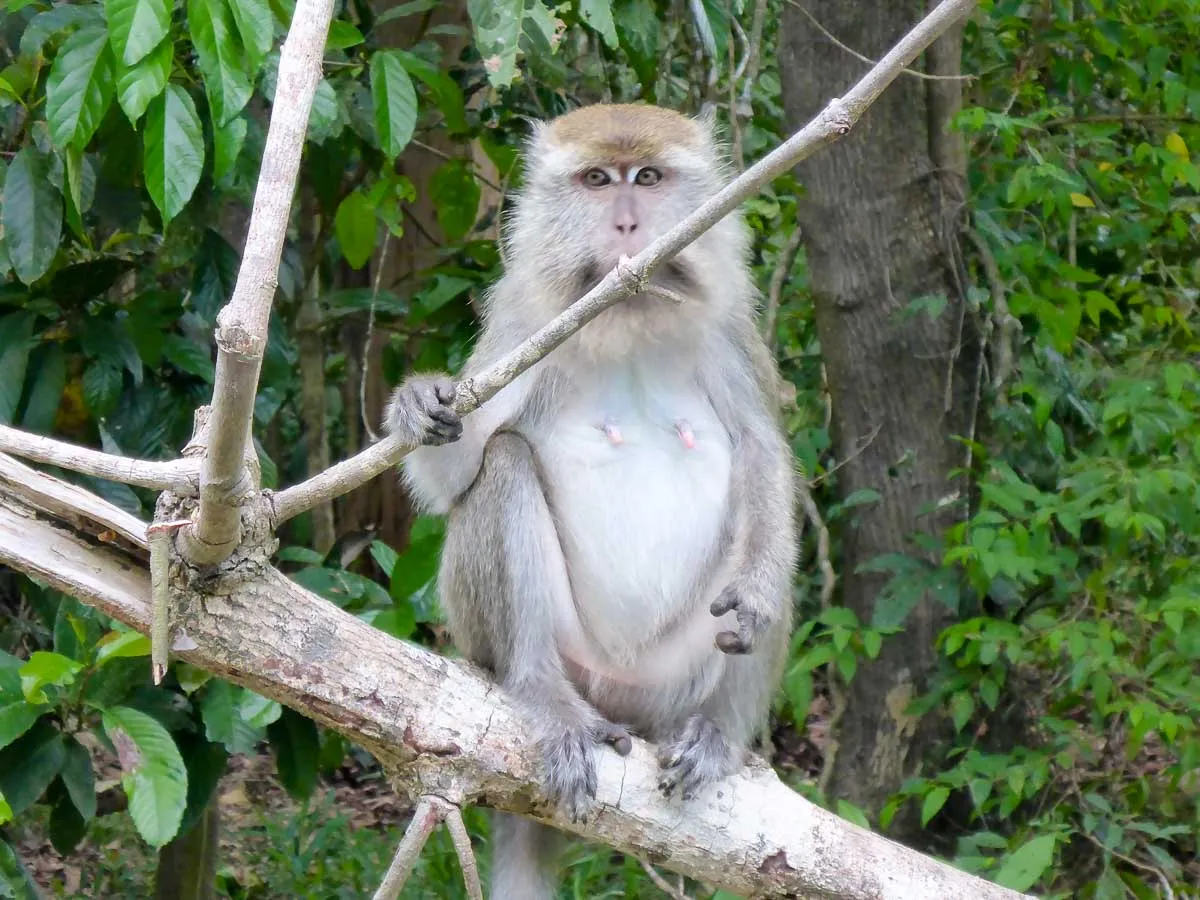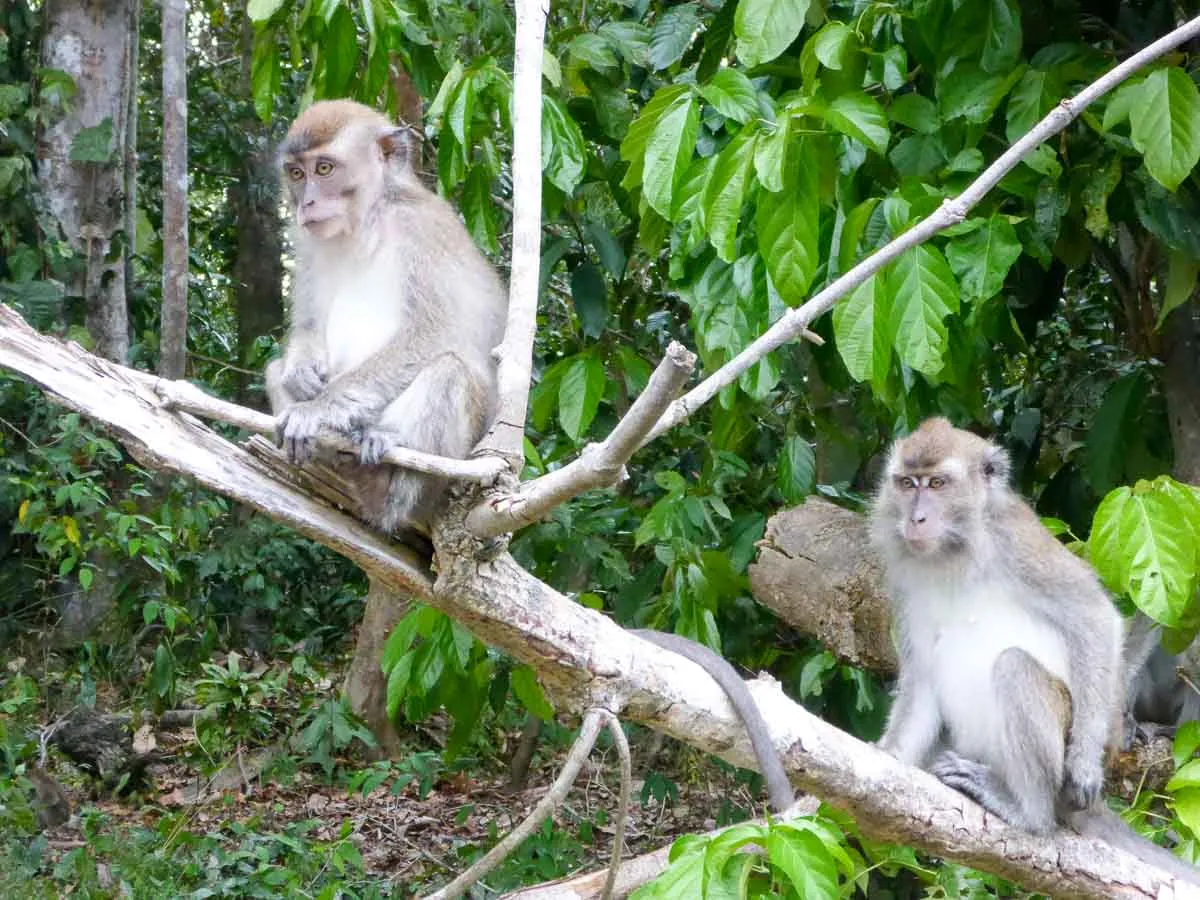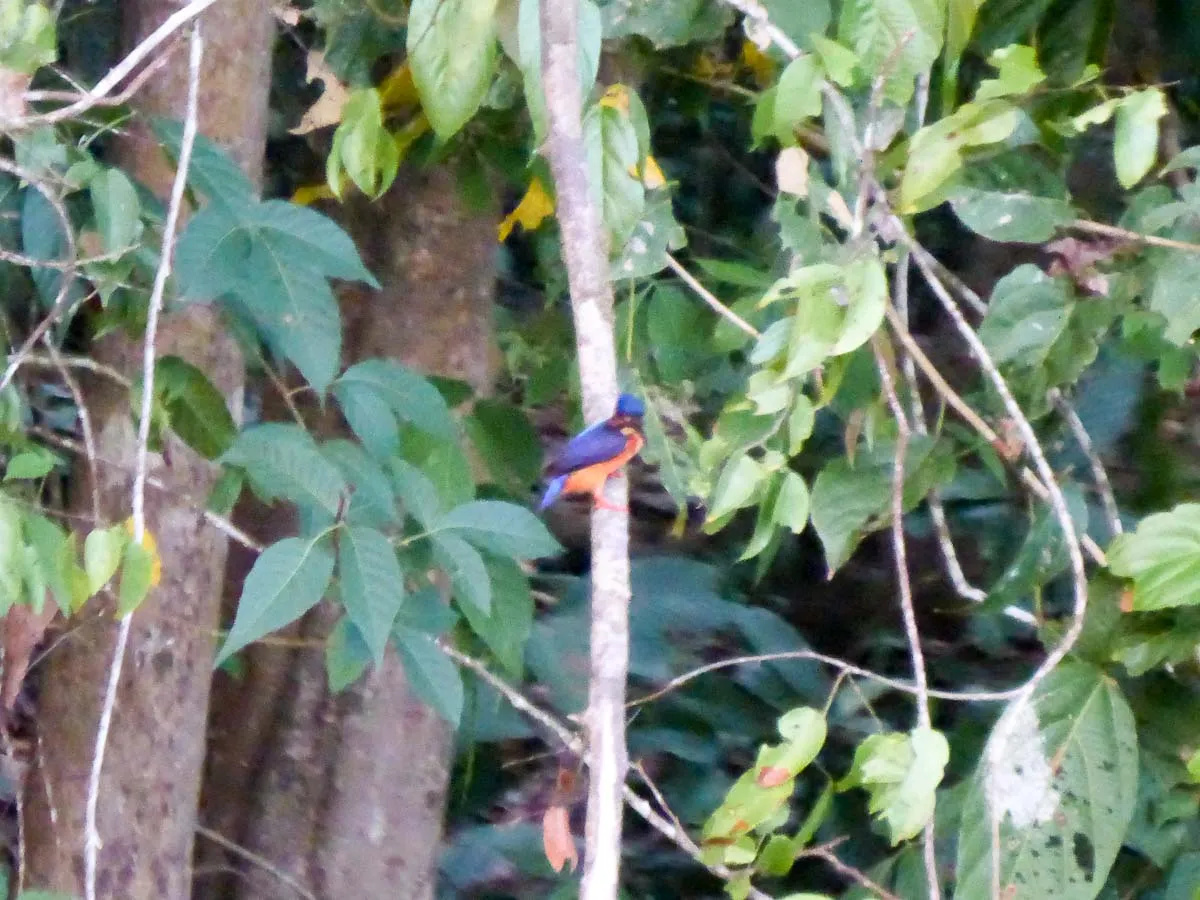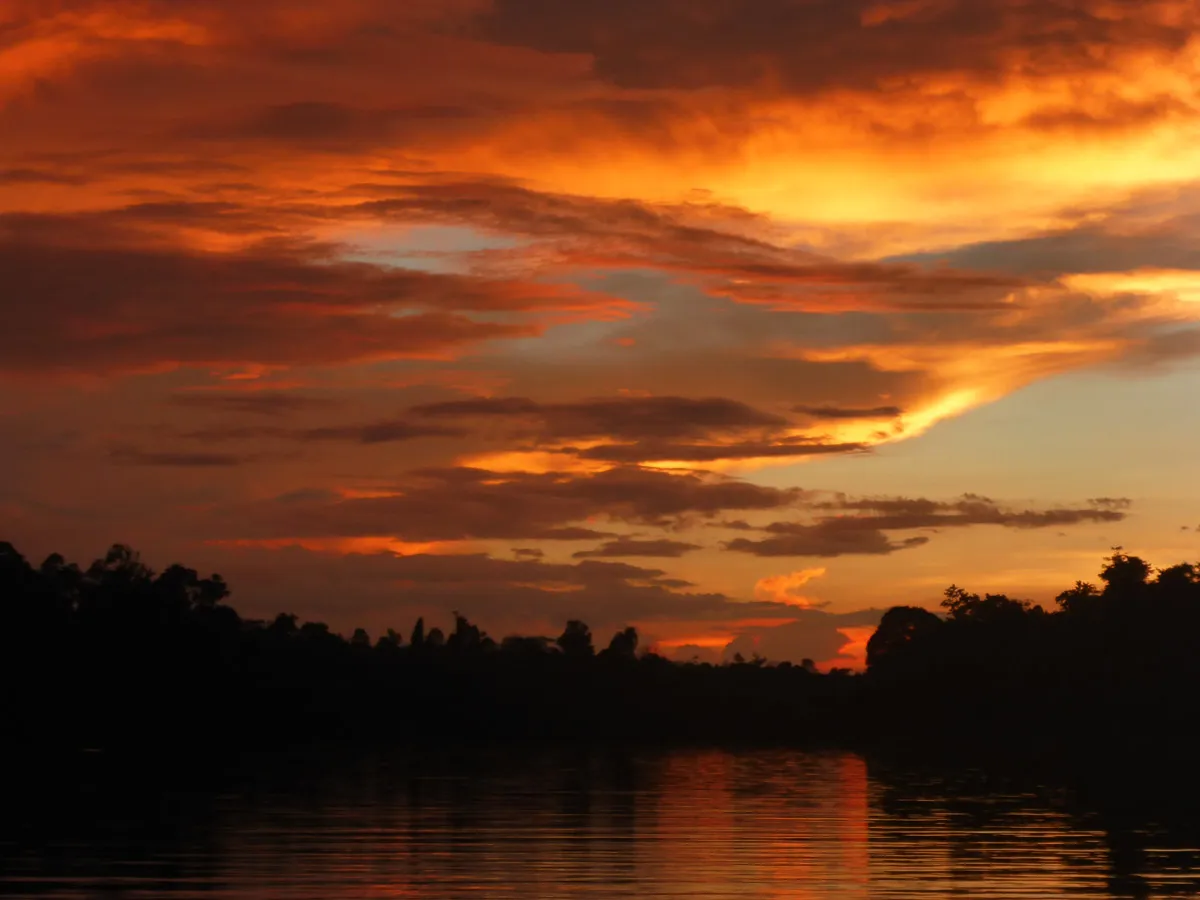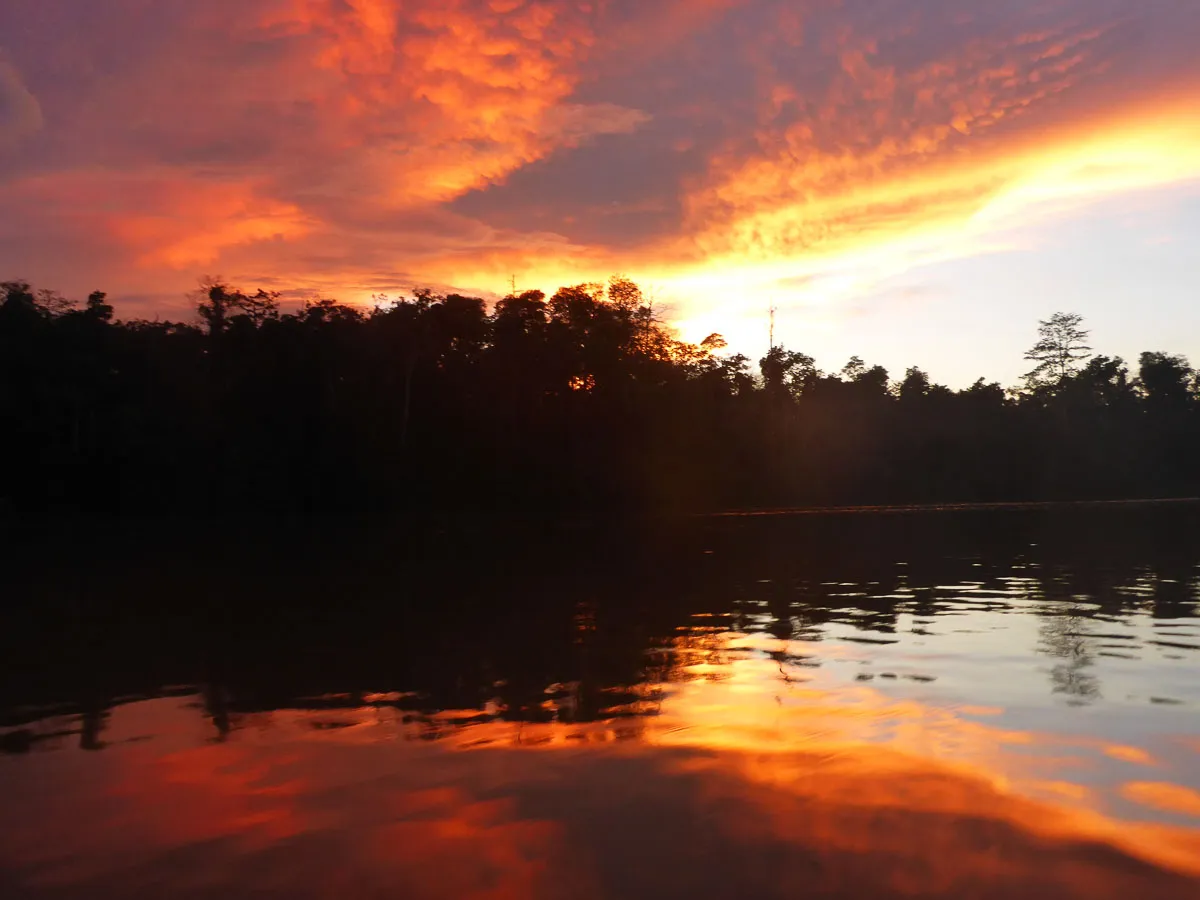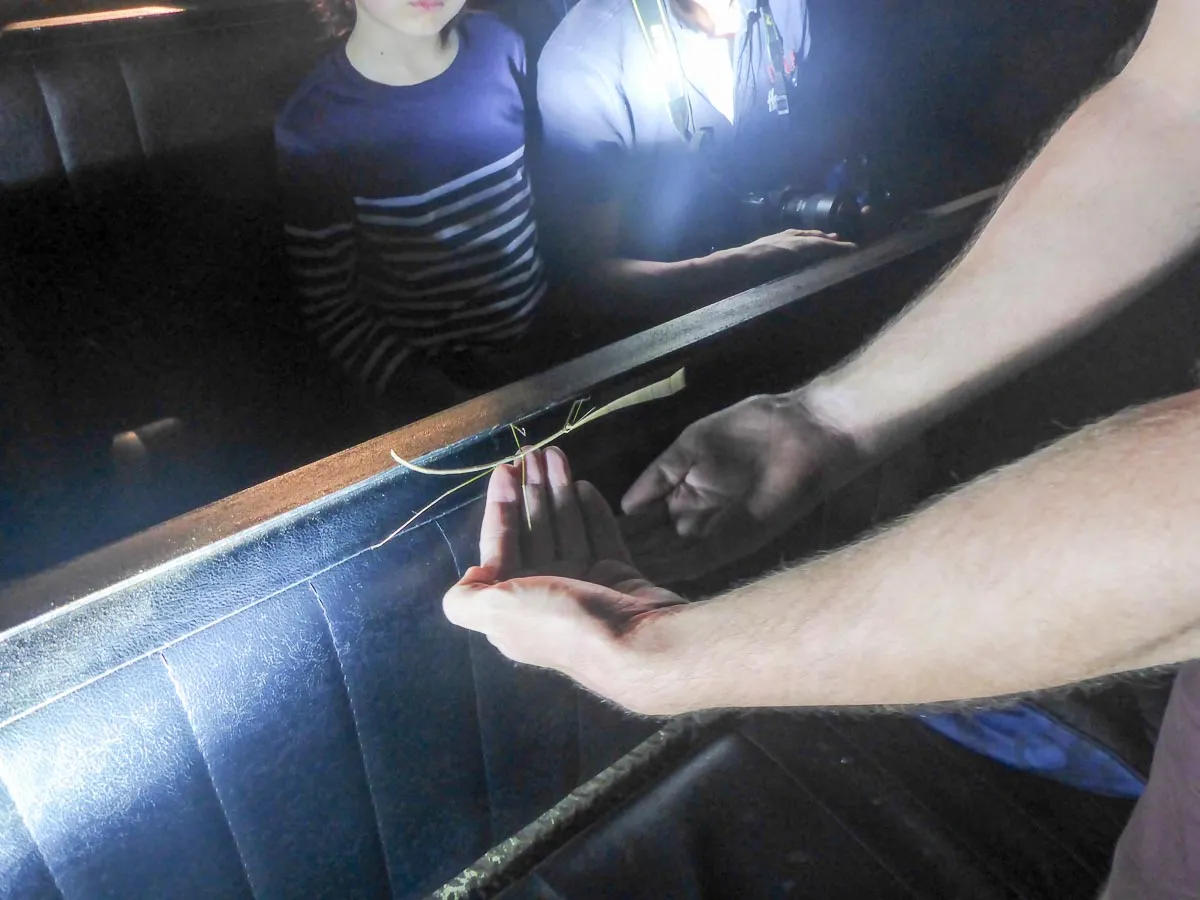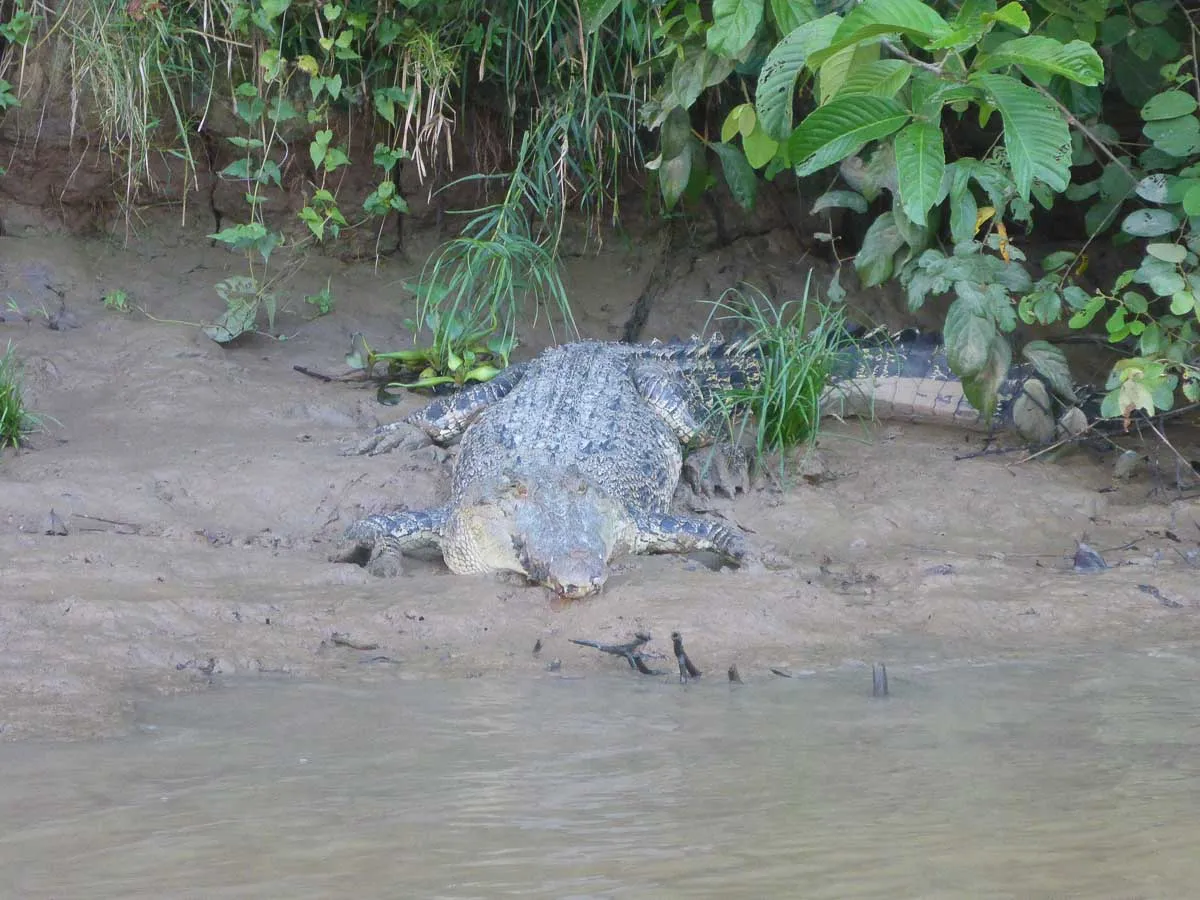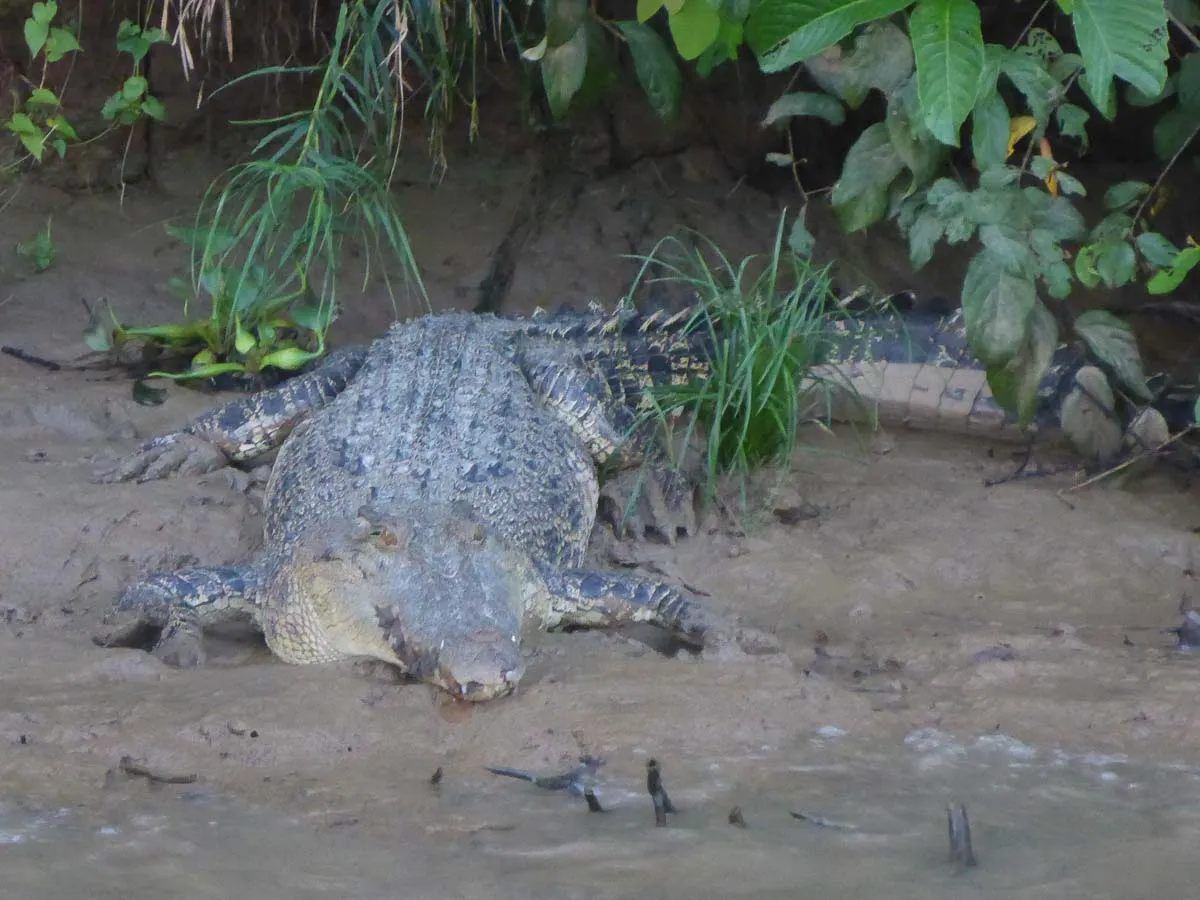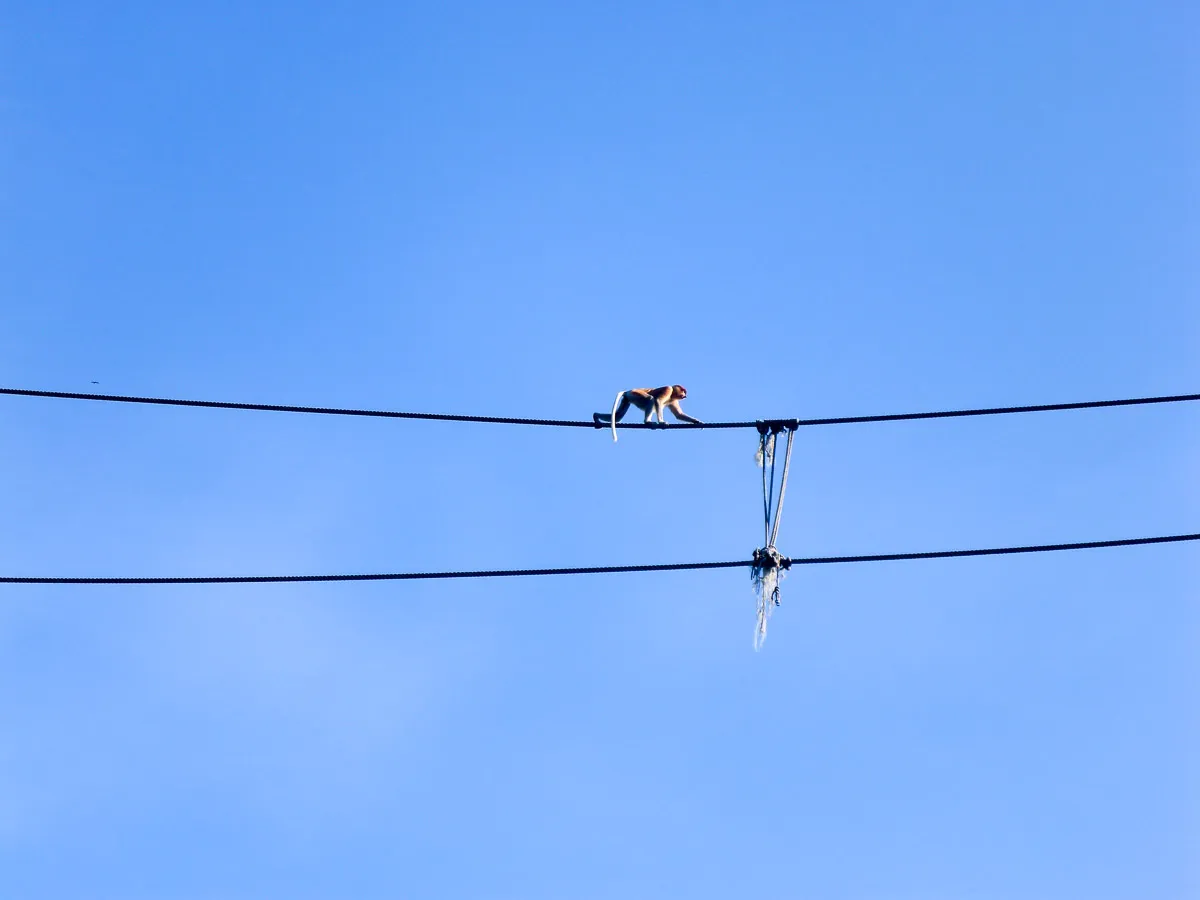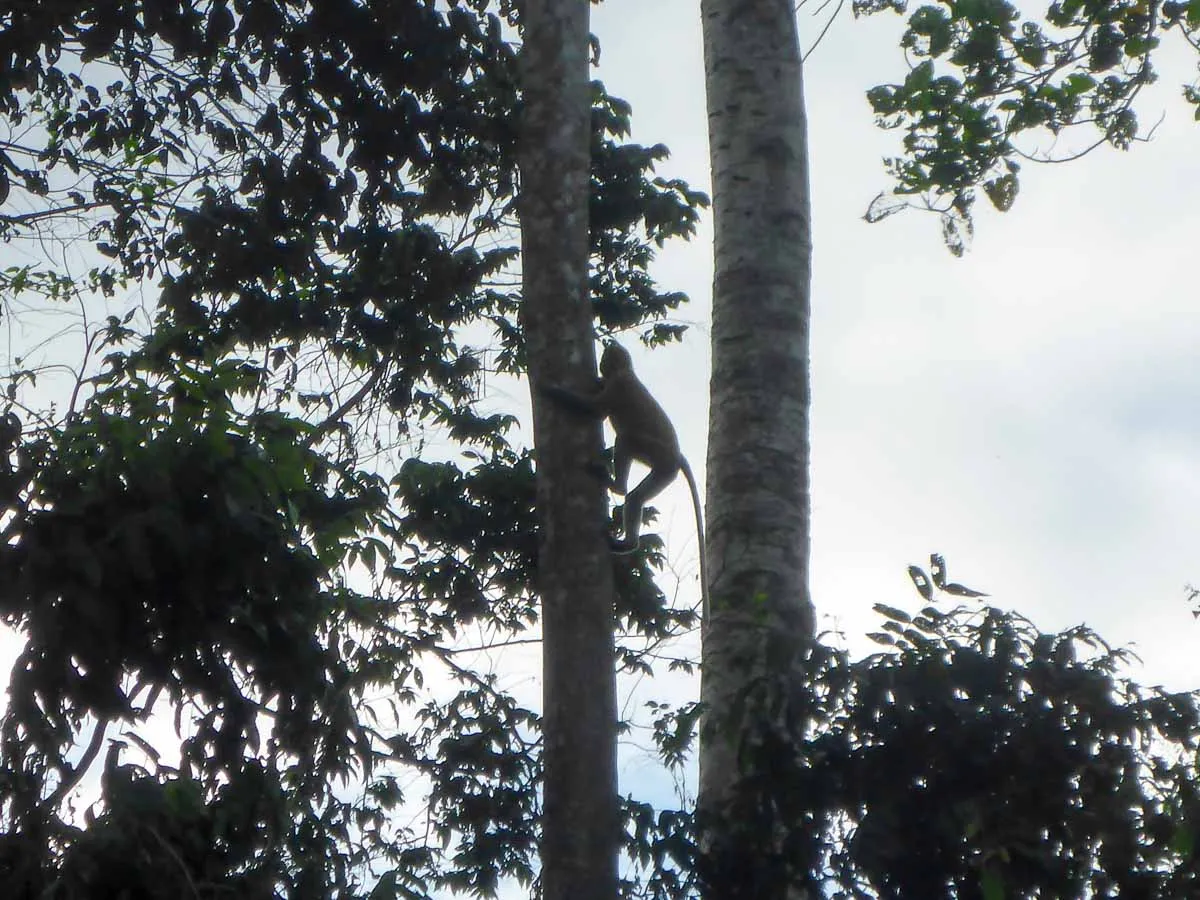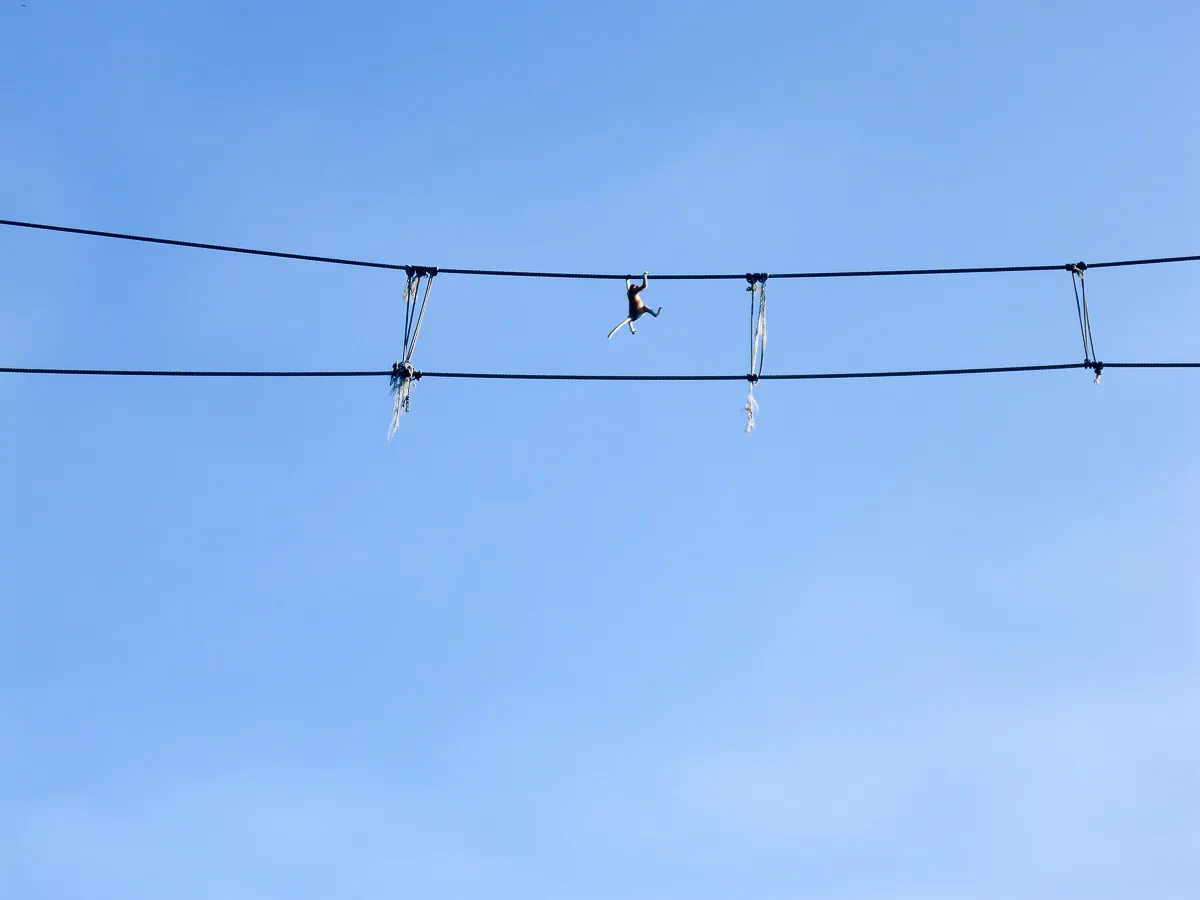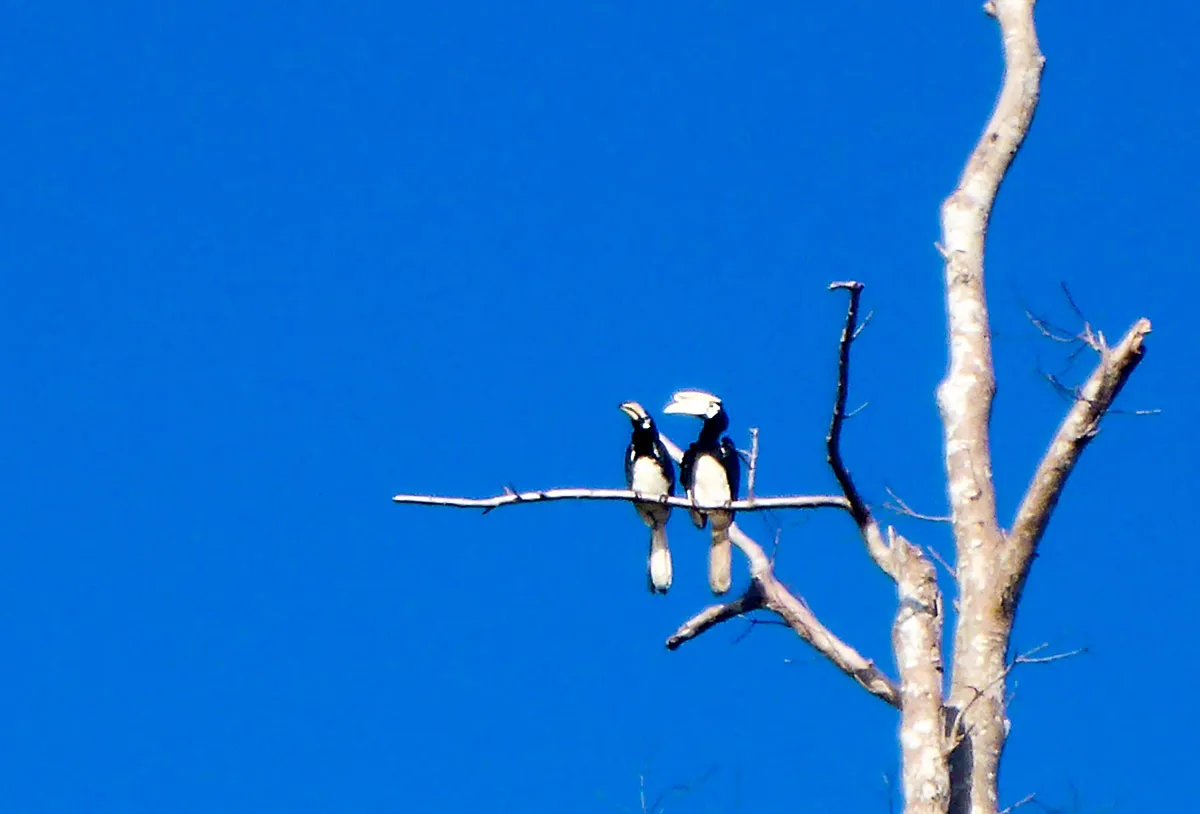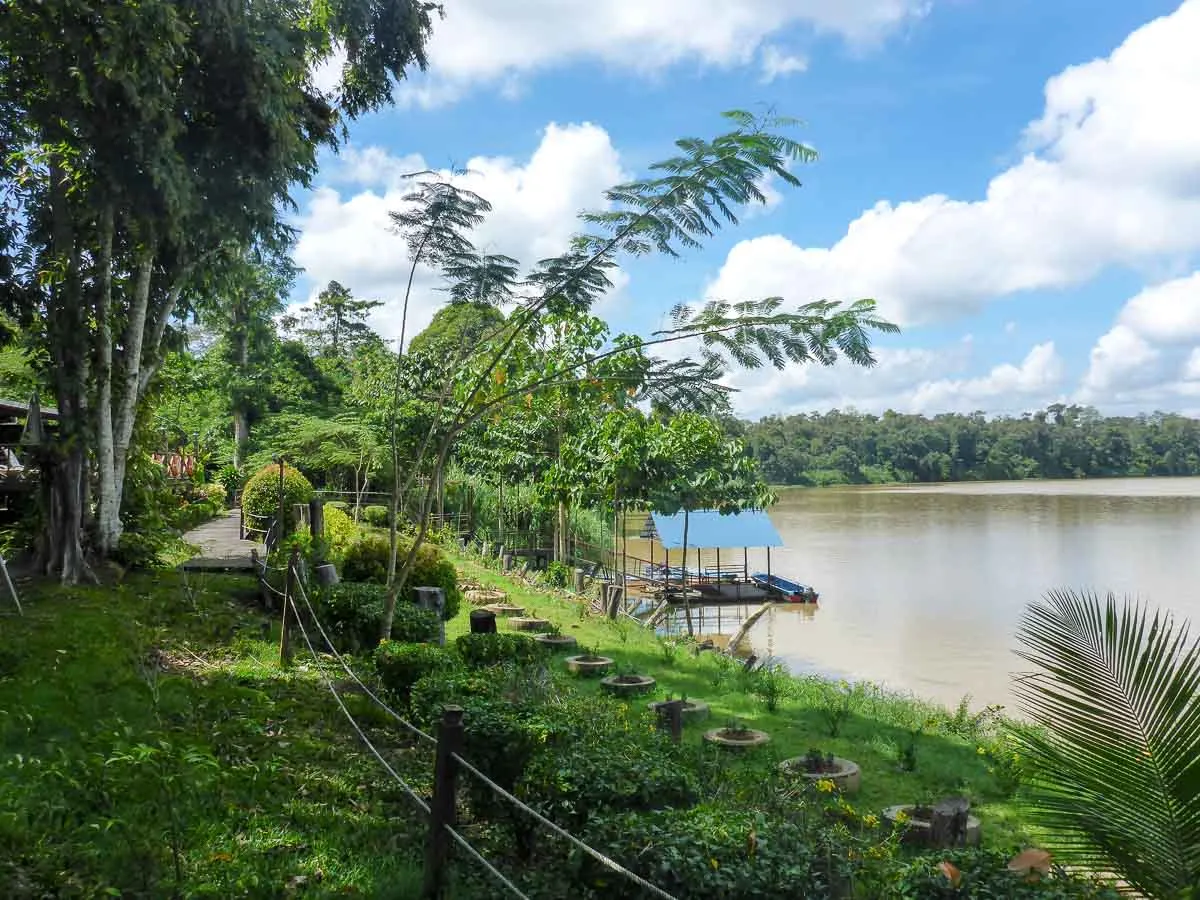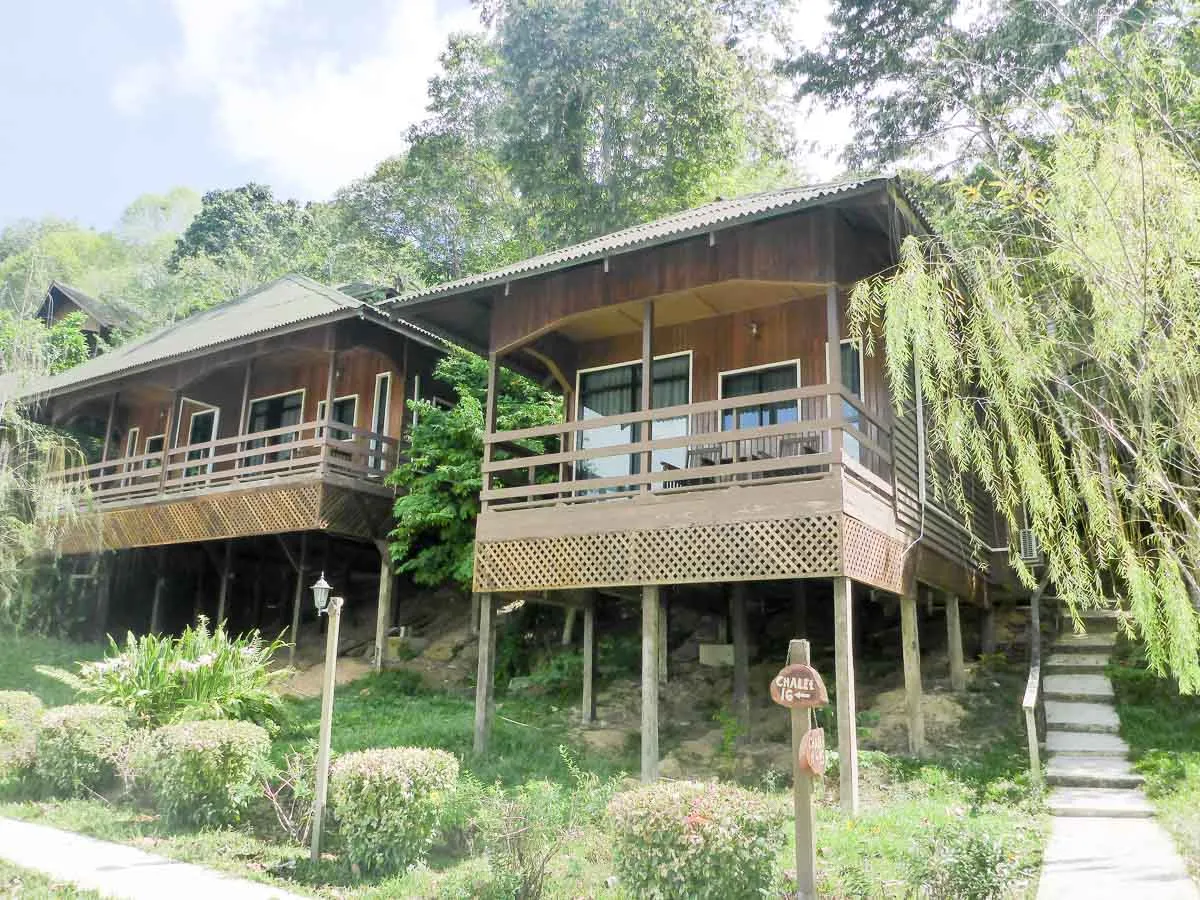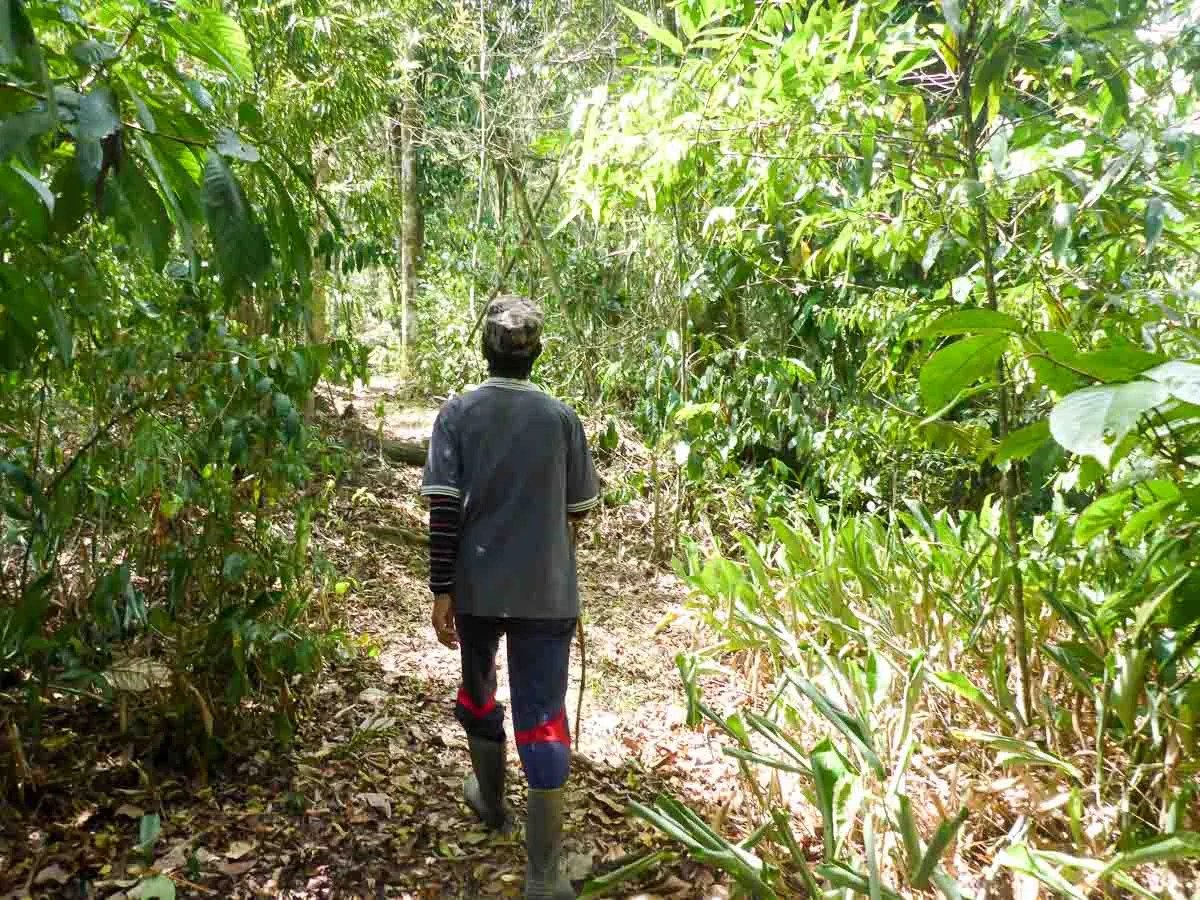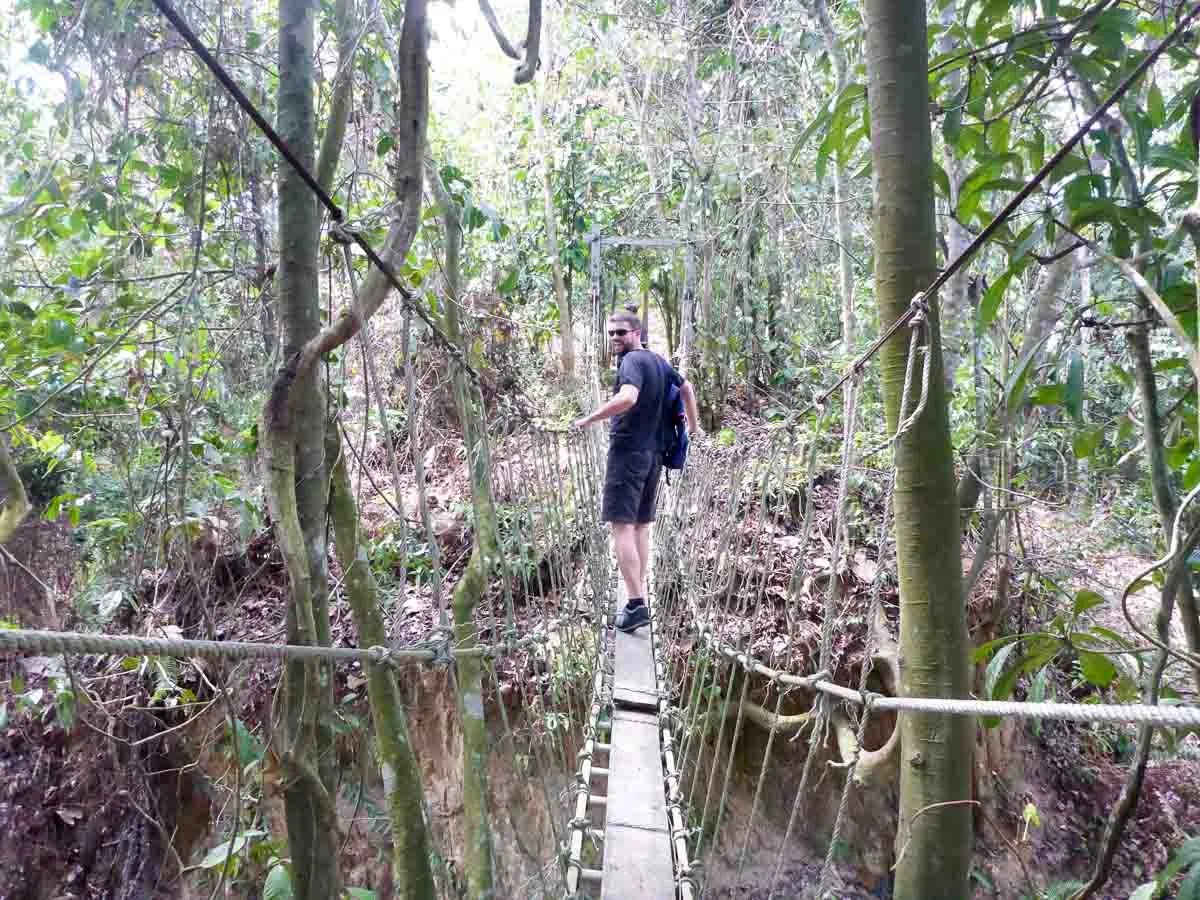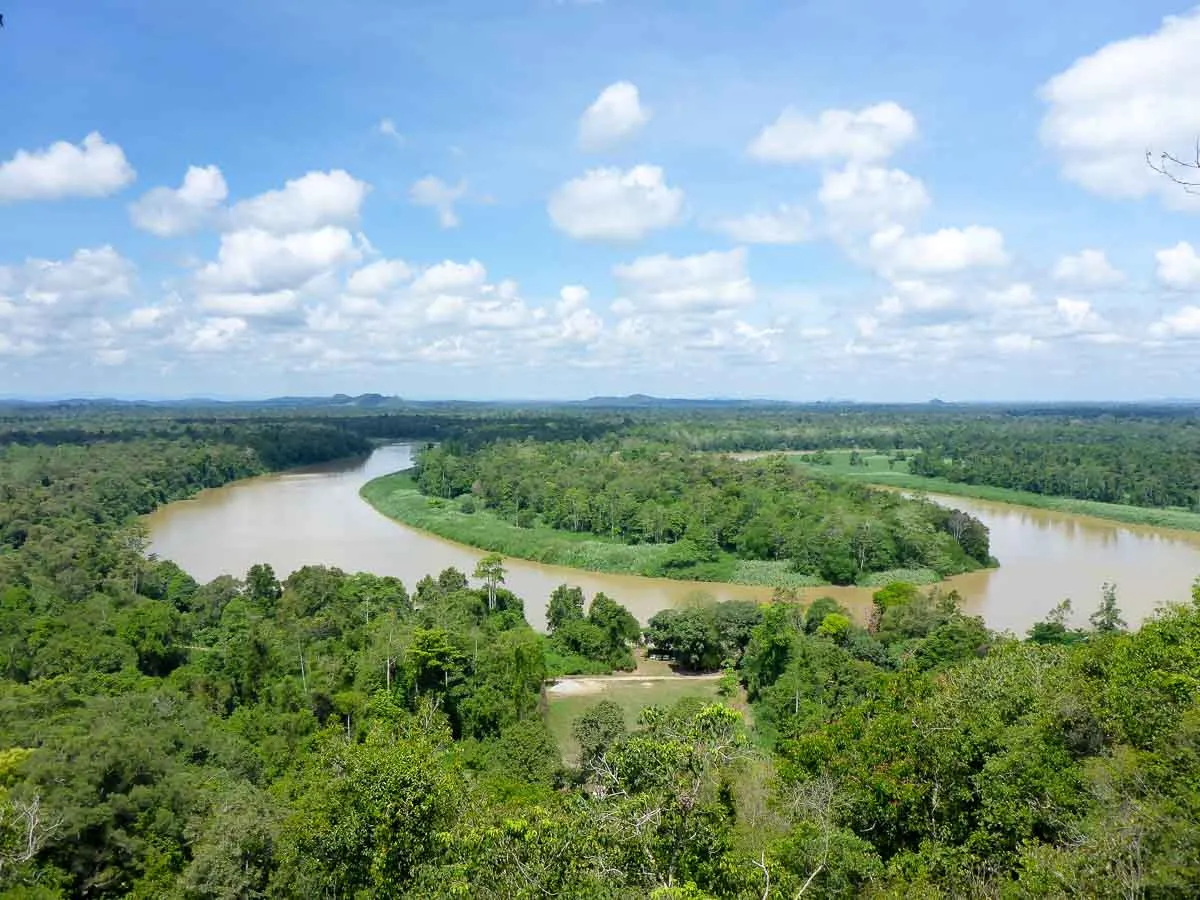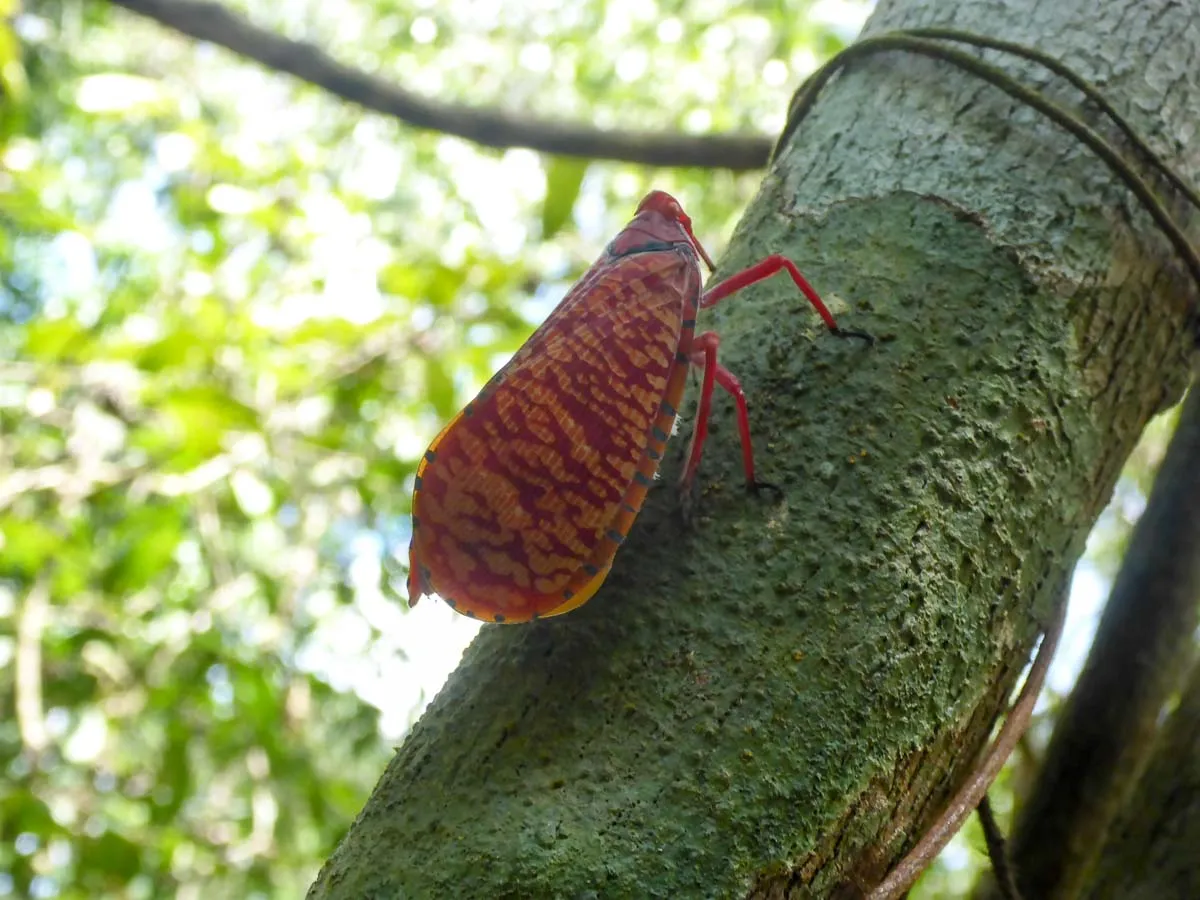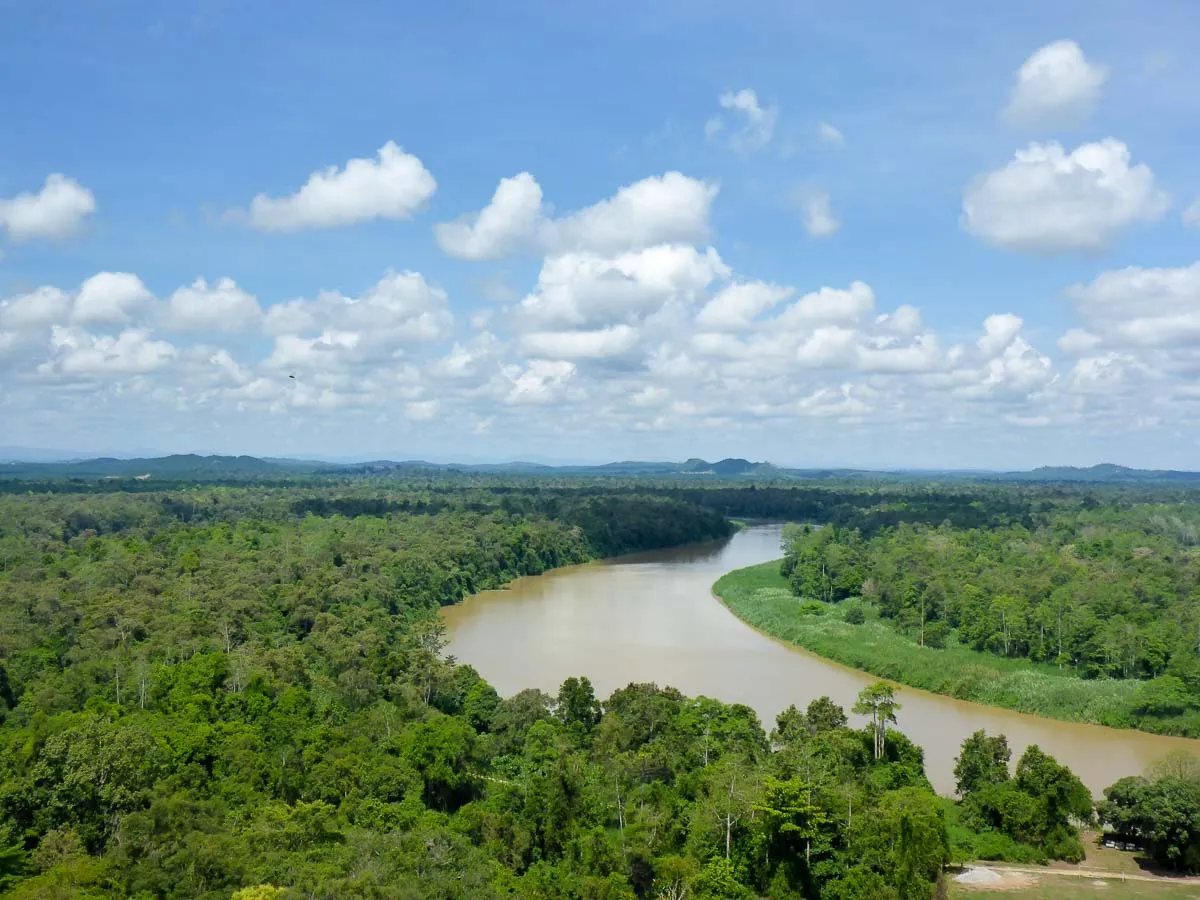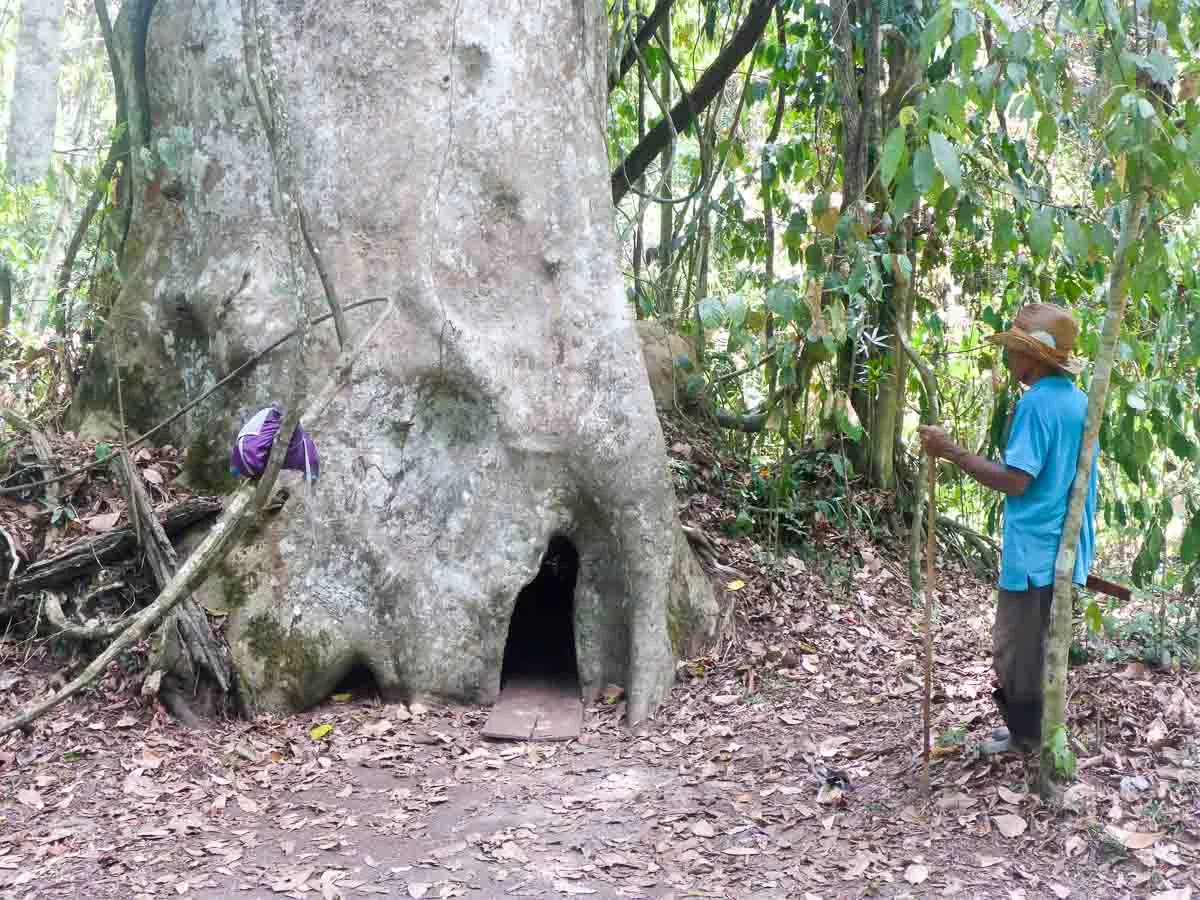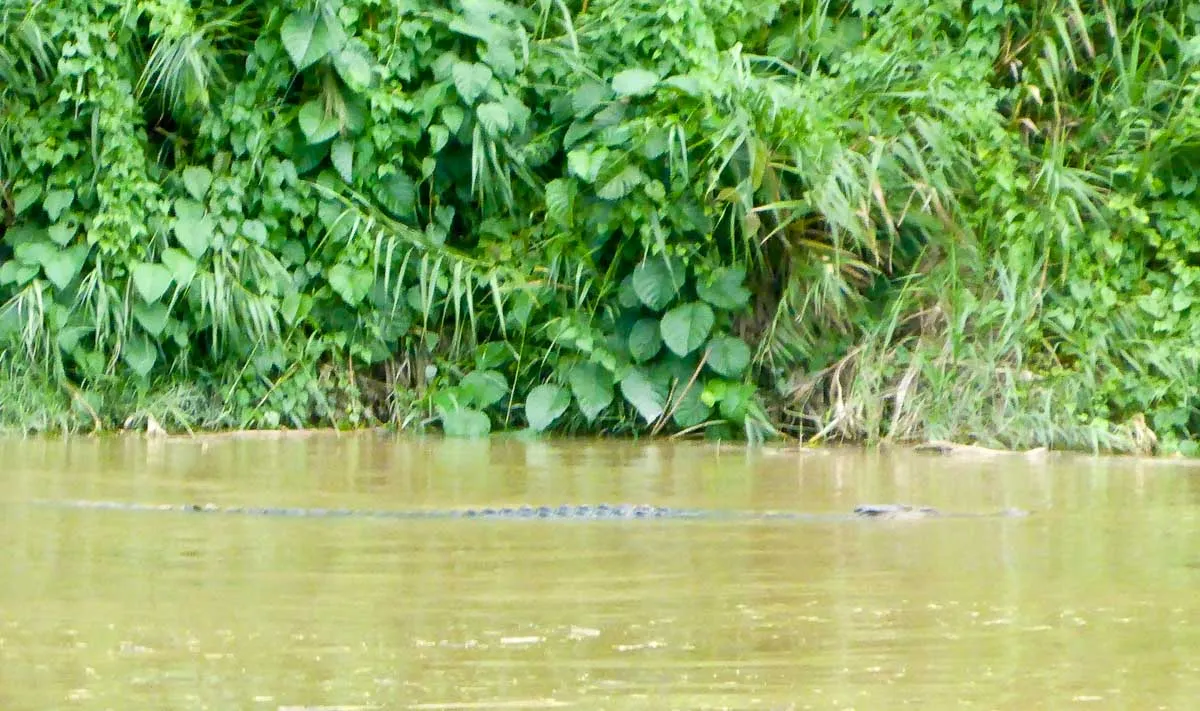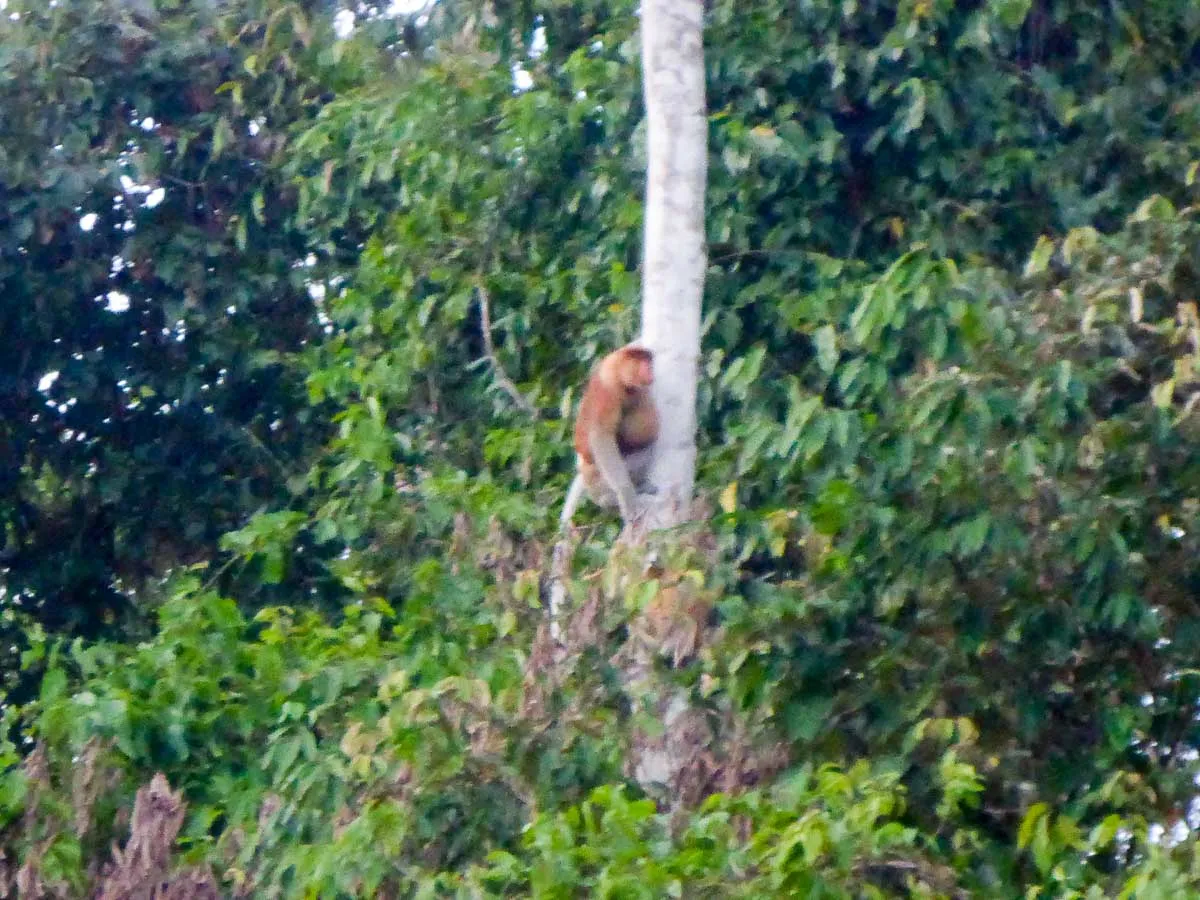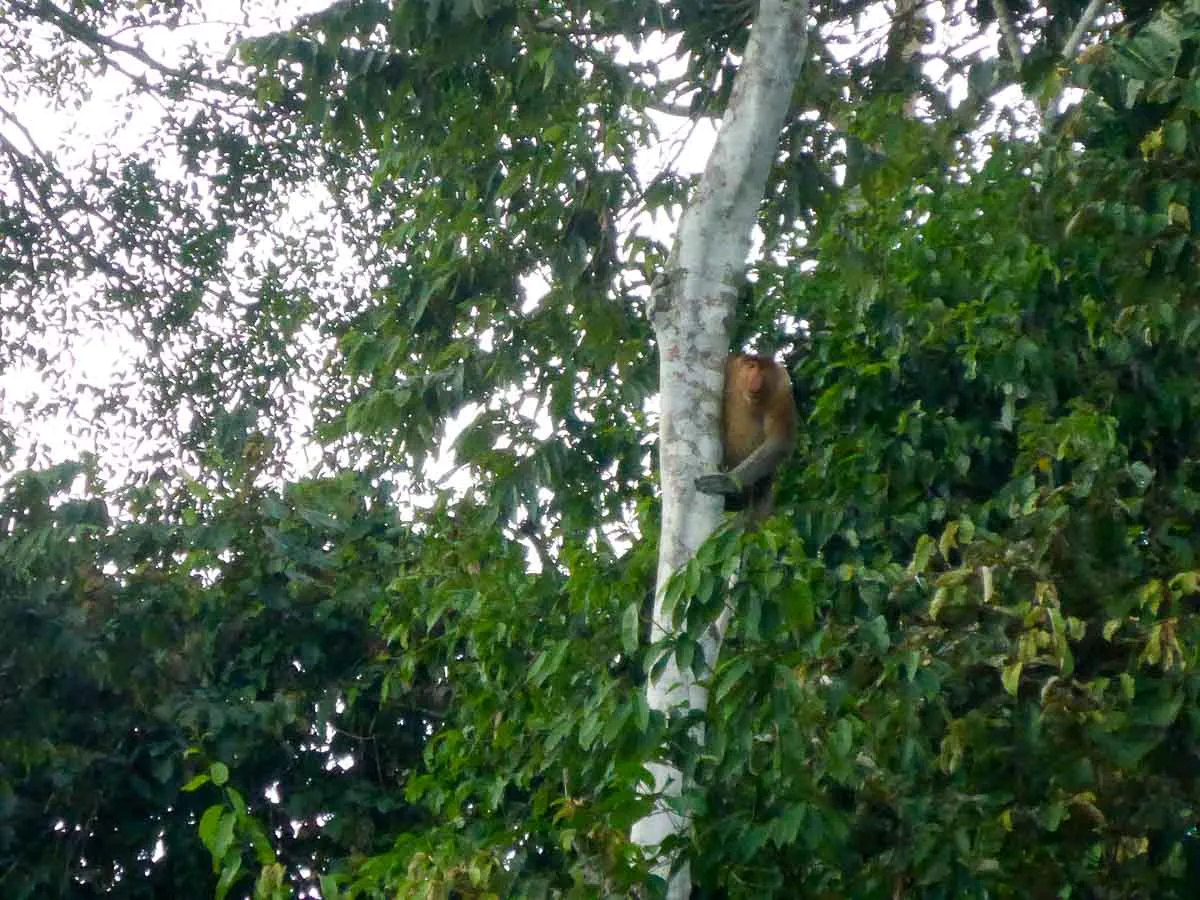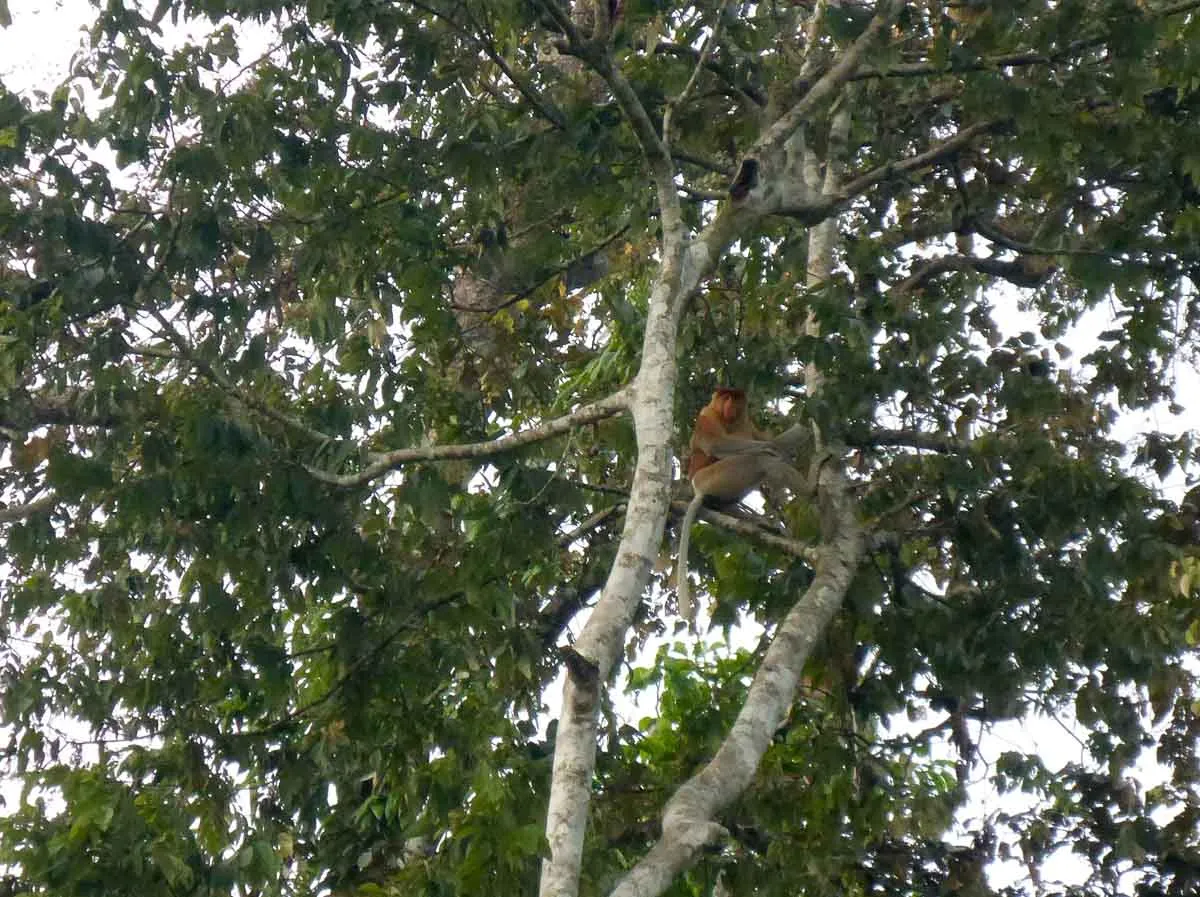To experience nature, while in Borneo, we booked a trip to the Kinabatangan River where we would spend three days / two nights staying at the Myne Riverside Resort. Our purpose of being there was to see the wildlife and with three river cruises, one night safari and one jungle walk planned we were certainly hopeful of spotting at least a few animals.
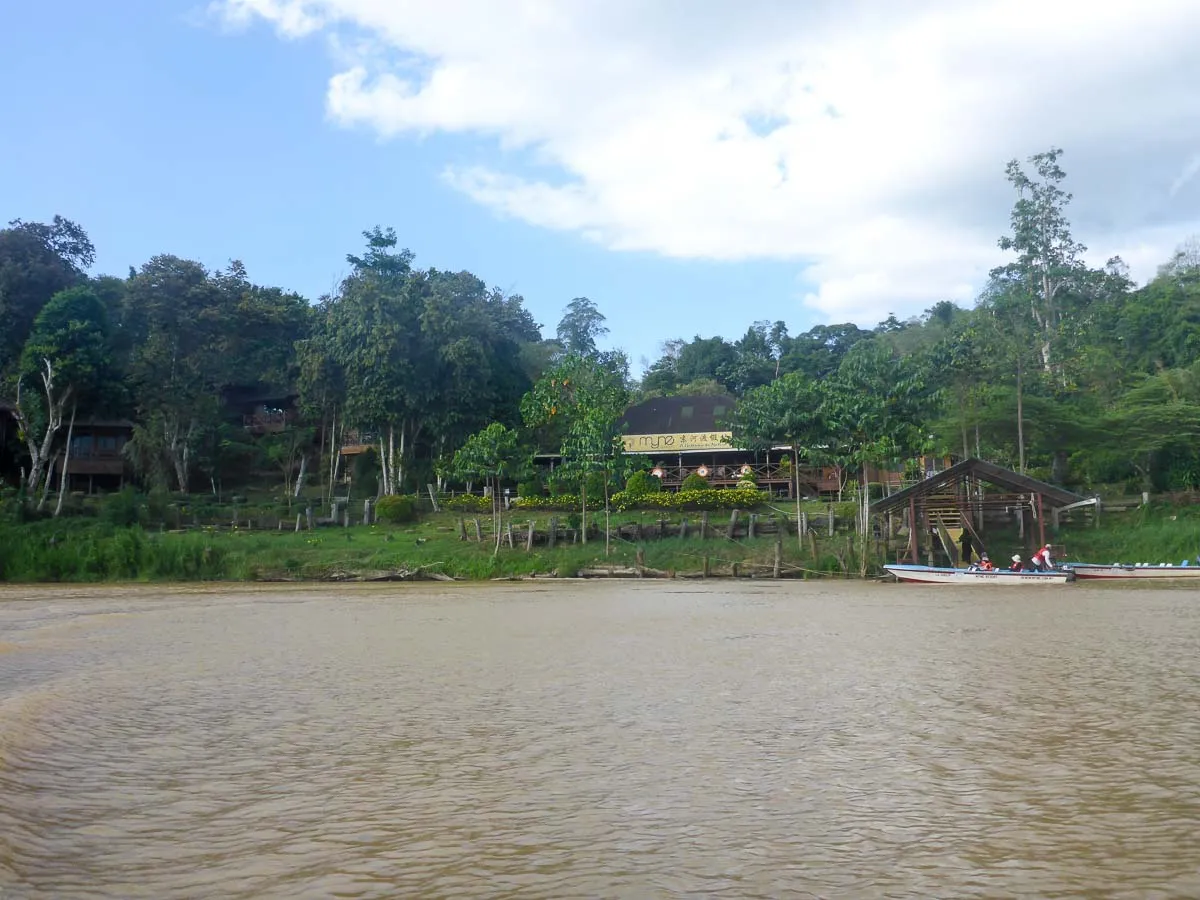
We were familiar with the Kinabatangan River before we visited after previously seeing it on a BBC documentary entitled ‘Bill Bailey’s Jungle Hero’. In the programme Bill follows the trail of Darwin’s rival Wallace, as he travels around Malaysia and Borneo. Wallace spent much time exploring the river and uncovering previously undiscovered species. A few, including the famous Wallace Hawke-eagle, still retain their discoverers’ name.
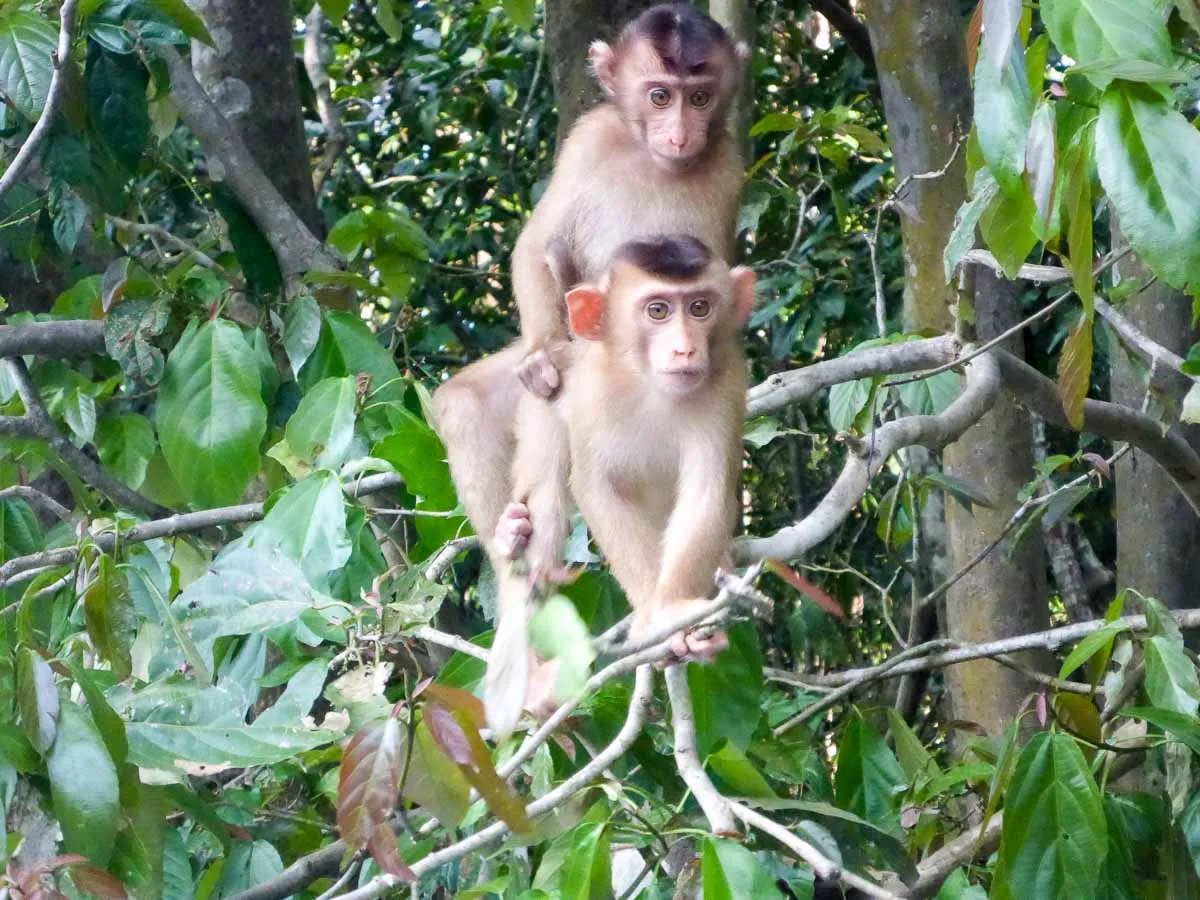
Only a couple of hours drive from Sandakan we were dropped off at the Myne Resort and were immediately impressed. This luxury riverside cabin more than exceed our expectations and we were happy we booked to stay two nights instead of just one.
From our cabin we had spectacular view overlooking Malaysia’s second longest river.
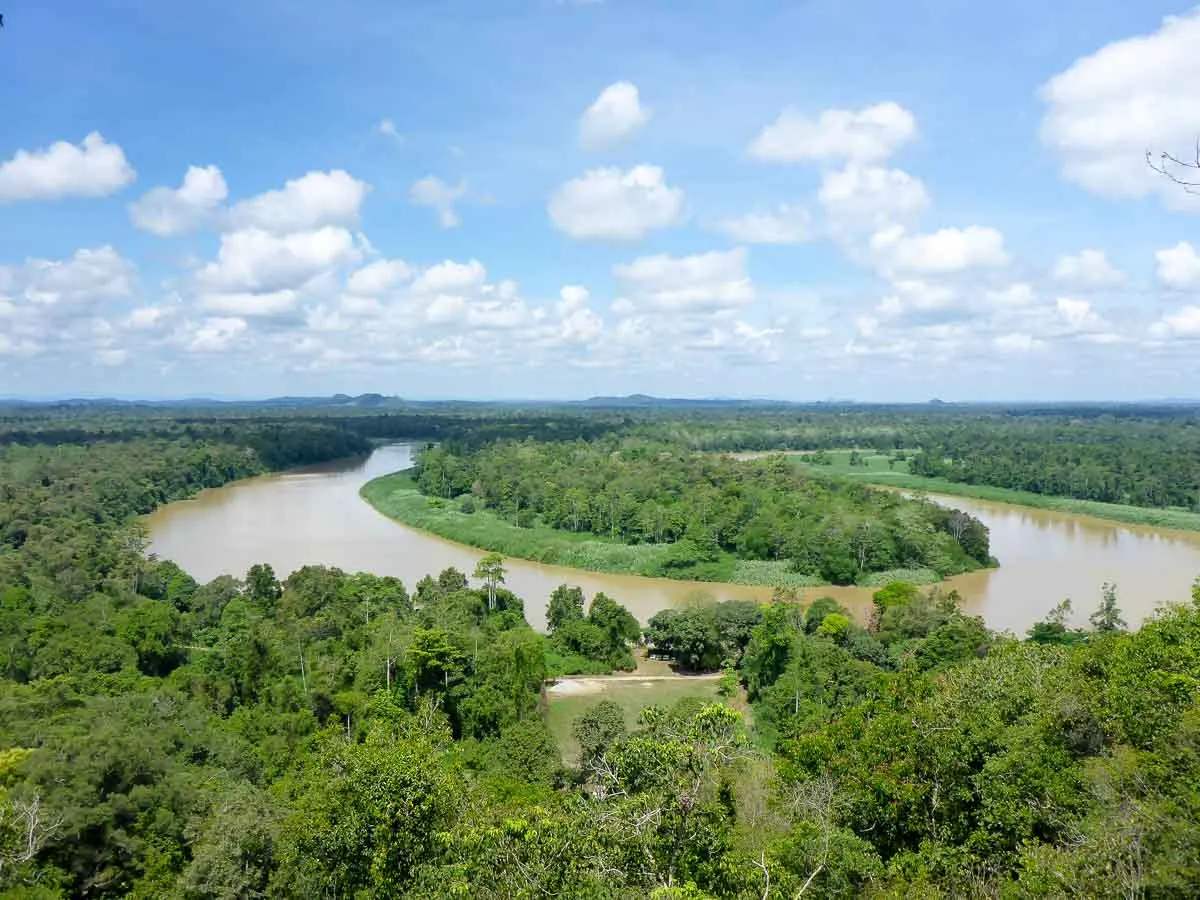
Although we felt fully emerged in nature I was still troubled from our drive from Sandakan. Literally every available patch of fertile land had been turned into palm plantations. The scale of the farming is startling and as I began doing some research I found that vast quantities of pristine rainforest, home to hundreds and thousands of unique species, have been cut down rapidly over the past century to make way for plantations. It wasn’t long before my perfect riverside view was shattered as I began to spot more and more palm trees peeking out from the downstream river.
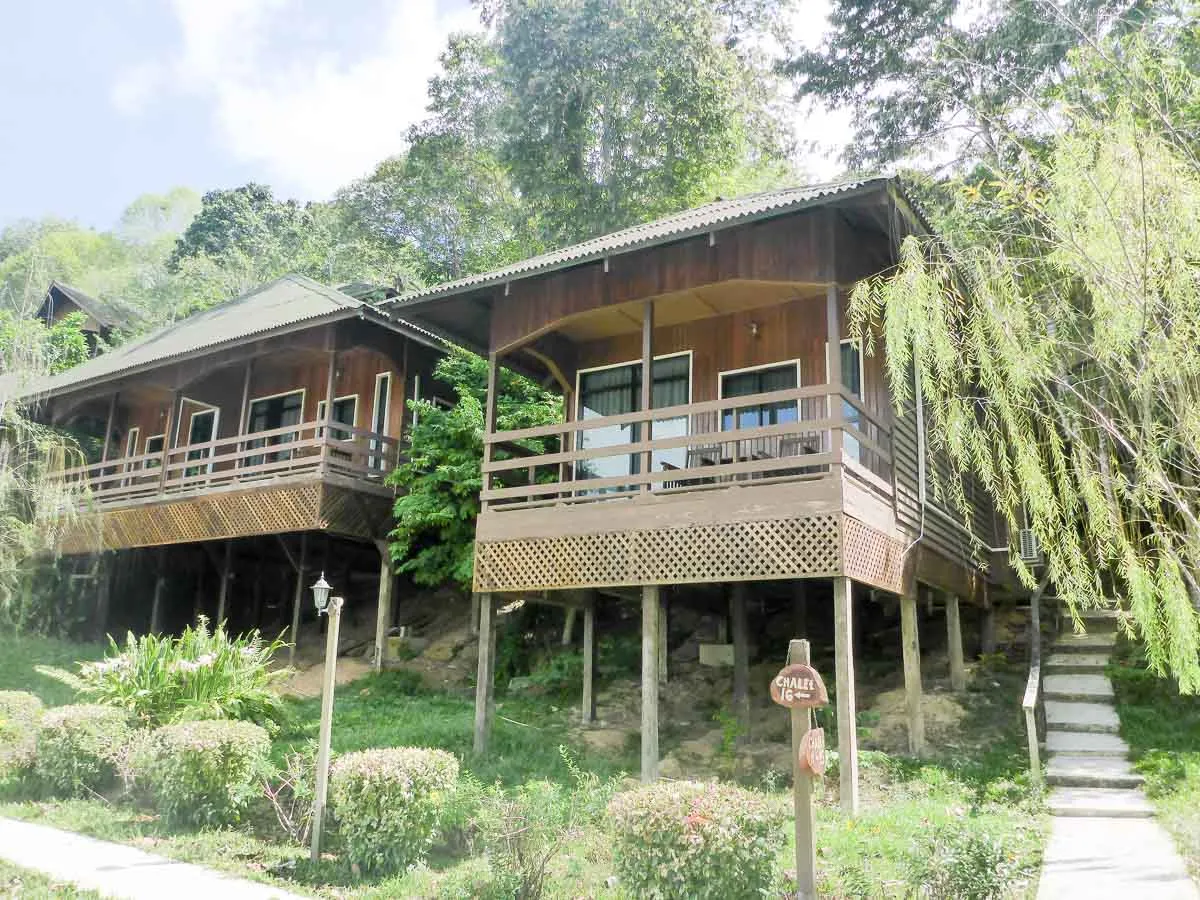
The area is said to be the last alluvial floodplains in Asia making it an area of enormous importance. However, along with the plantations, logging and agricultural activities have meant the area has been under threat and many wild animals became displaced. Thankfully, in 2005, the area was finally named a Wildlife Sanctuary and awarded 26,000 hectors which are to remain protected.
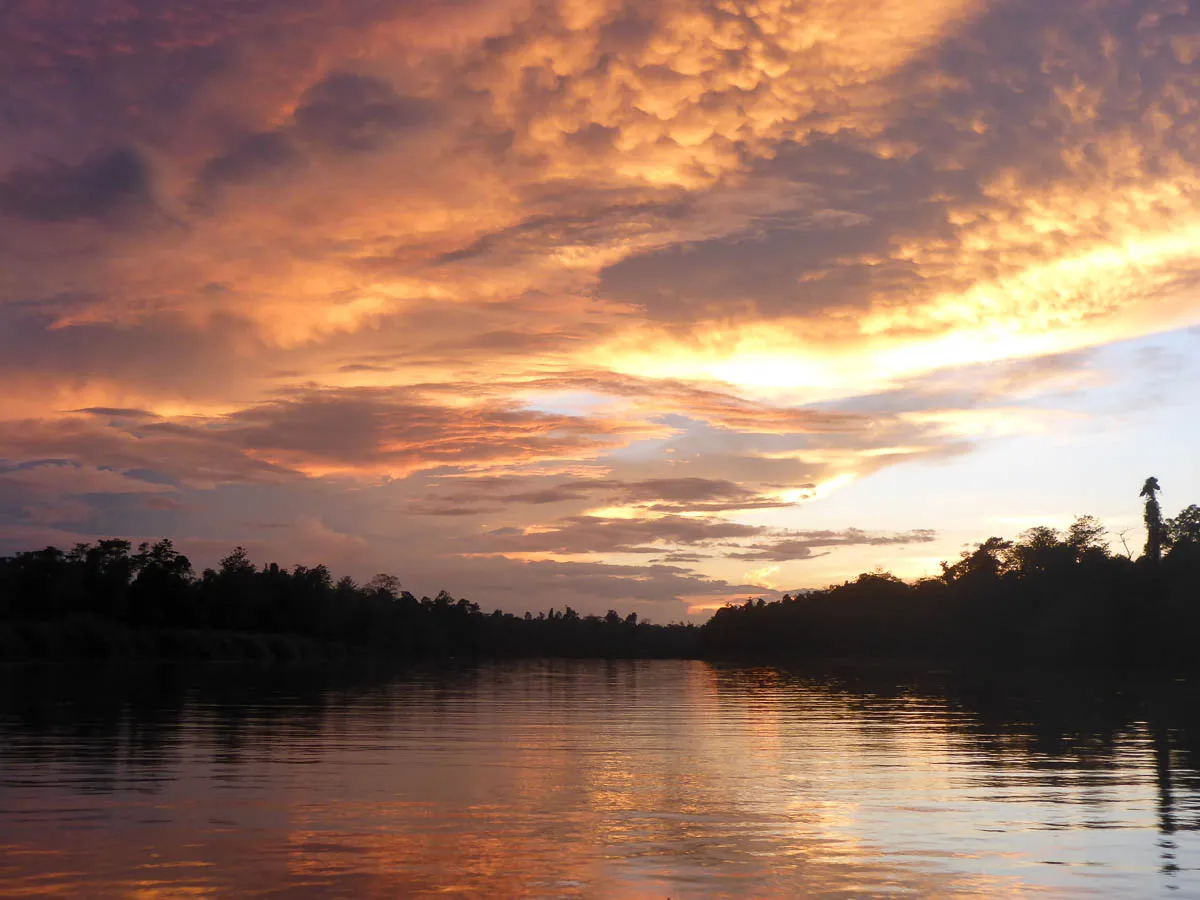
On our river boat trips we were lucky enough to see some amazing wildlife. We were captivated by the number of bright and beautiful birds of paradise we saw.
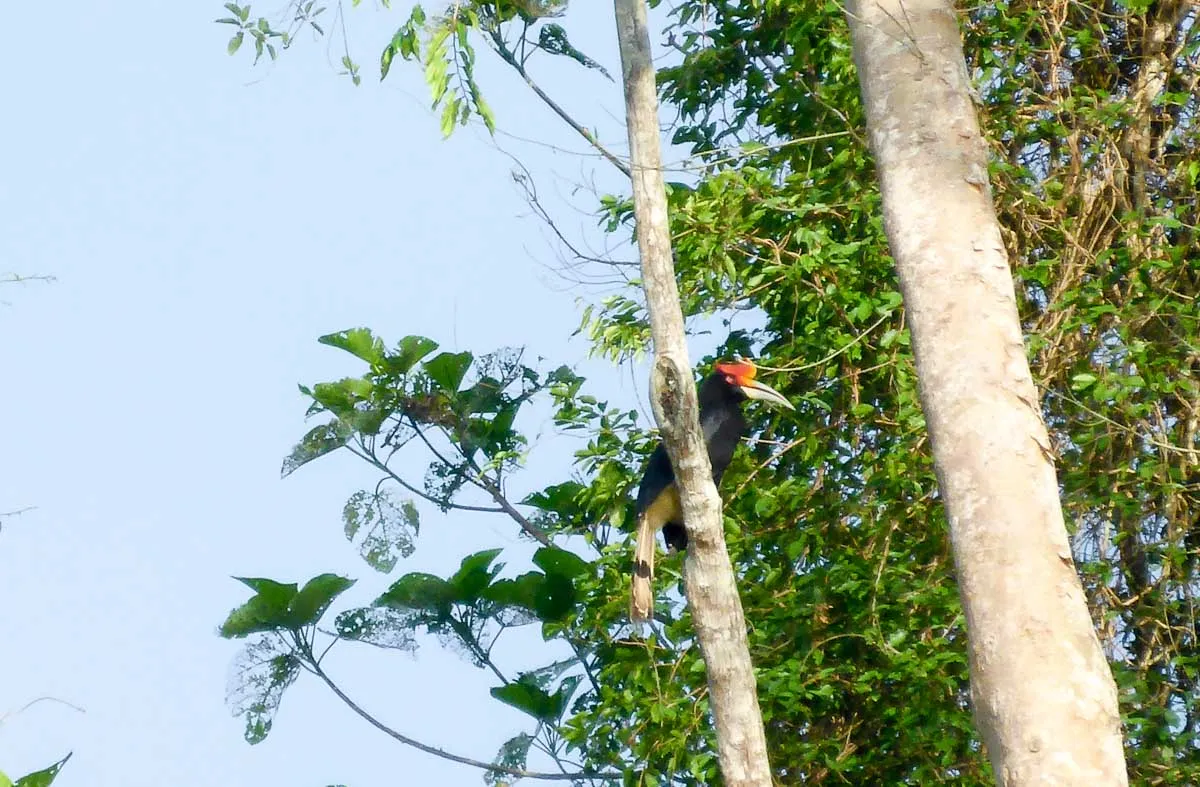
The unique shapes and colours of the three different species of hornbill we saw all contrasted against the blue skies and green trees.

We also saw a few delicate and colourful kingfishers hovering near our boat.
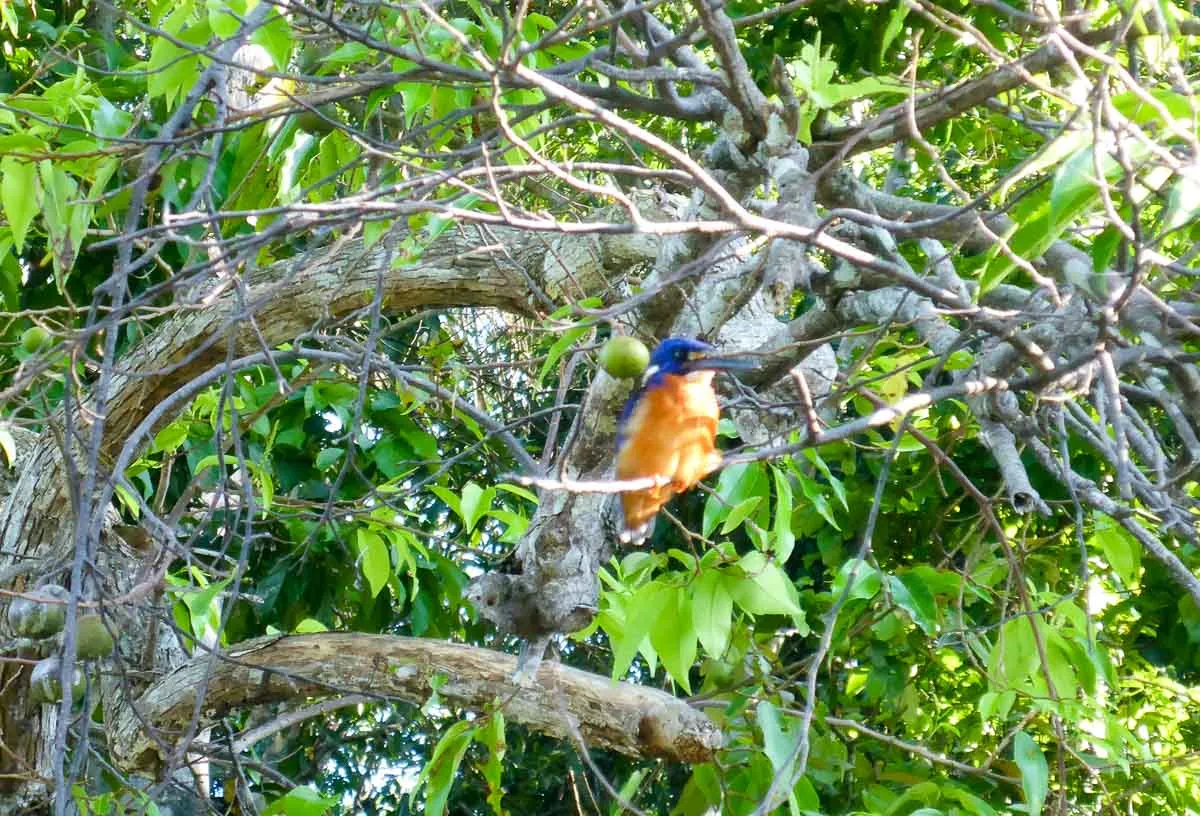
There is an abundance of monkeys and we got to see various species as they played and drank by the water including the pig tailed macaque, the long tailed macaque, silver leaf monkey and red monkey.
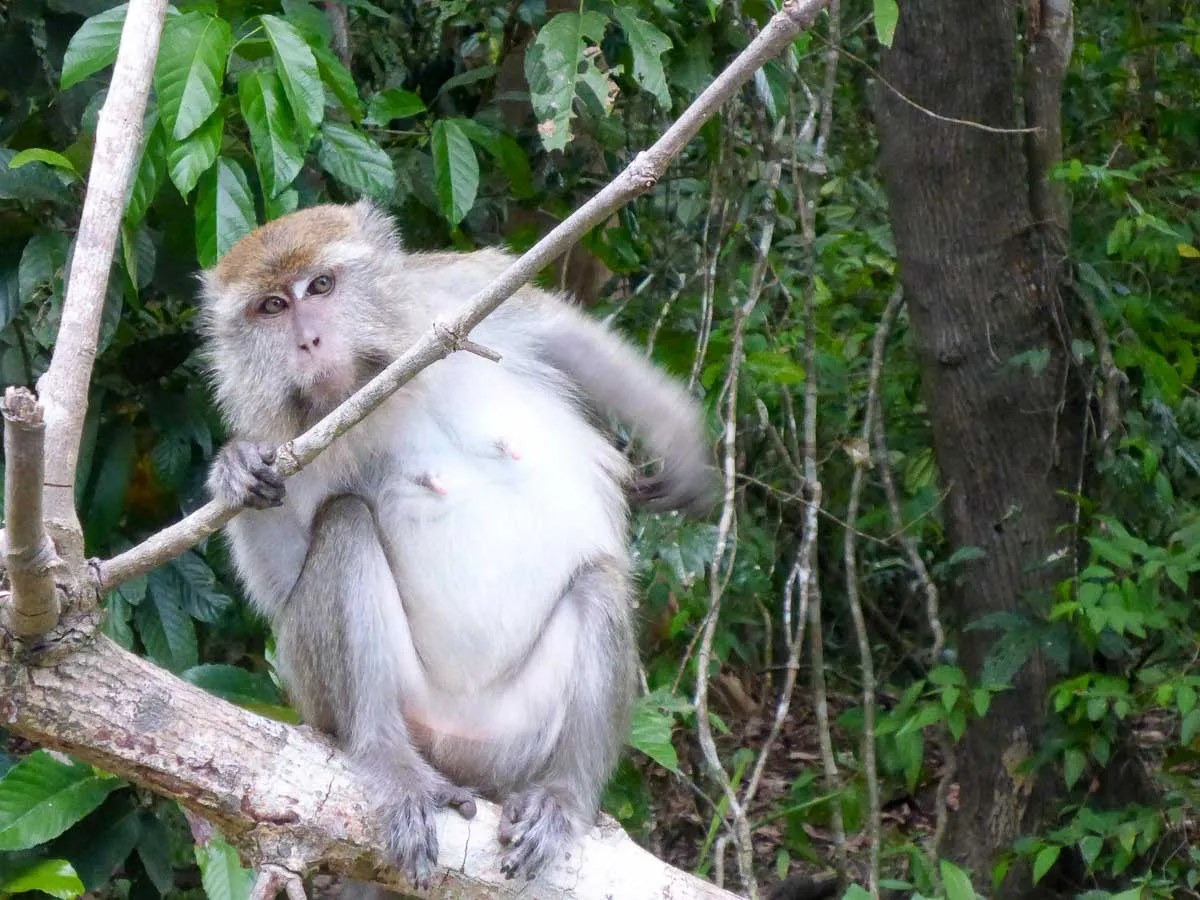
We also spotted plenty of Proboscis Monkeys which are native to the area. They are not hard to spot as they have a very distinctive nose. Also known as the Dutch monkey due to its unsually large nose and fat belly.
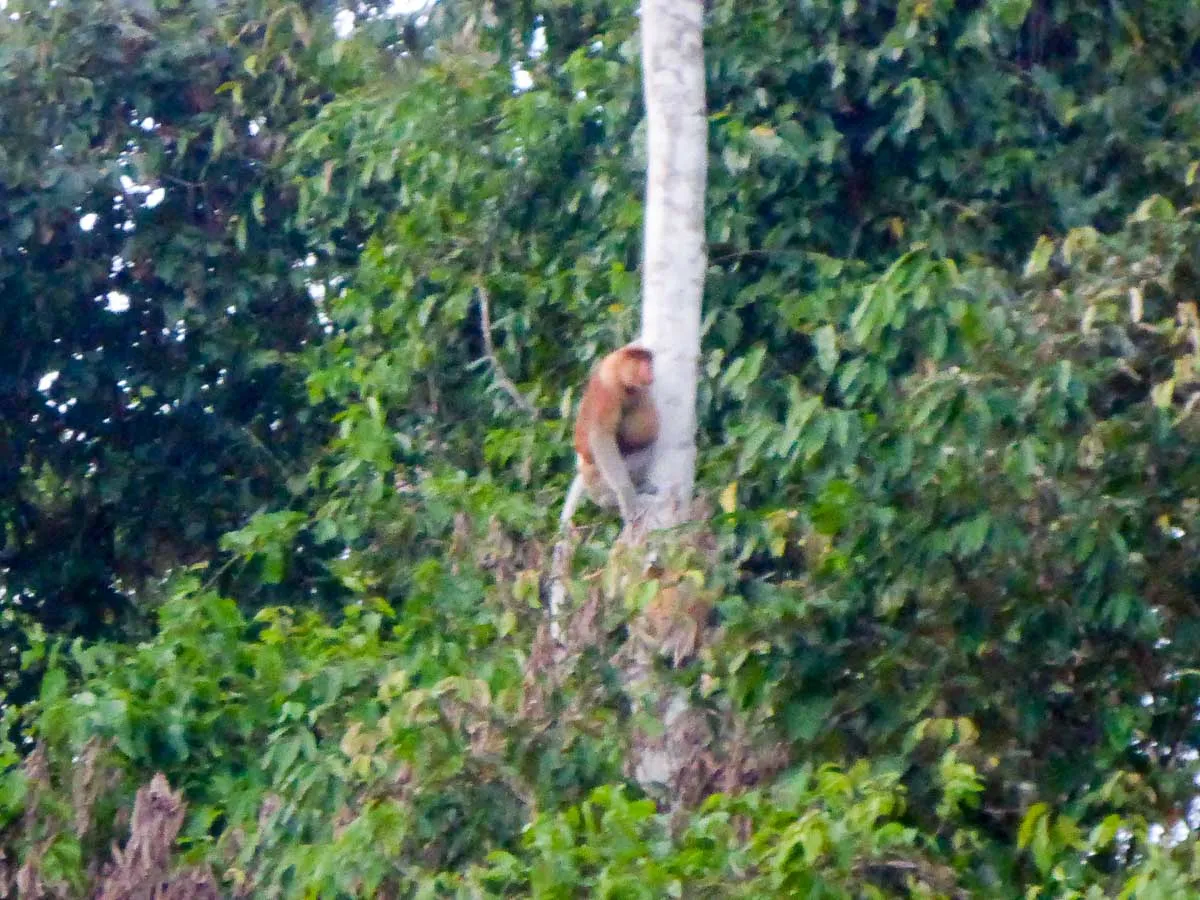
It was also good to see a few nests where the orangutans lived, although we only managed to spot one next to our lodge.
Our night safari didn’t start off too promising as in the beginning we only managed to spot insects, which seemed to be diving for us in the jeep, but towards the end we managed to spot a magnificent owl, wild boar, two wild cats and cute looking and slow moving nocturnal specialist the Lo Loris.
On the morning of our last day we spotted plenty of crocodiles. Some were the size of our boat. I didn’t feel the need to try and get closer to take photographs however the driver of the boat disagreed and crept up next to him before he spotted us and dived into the water.
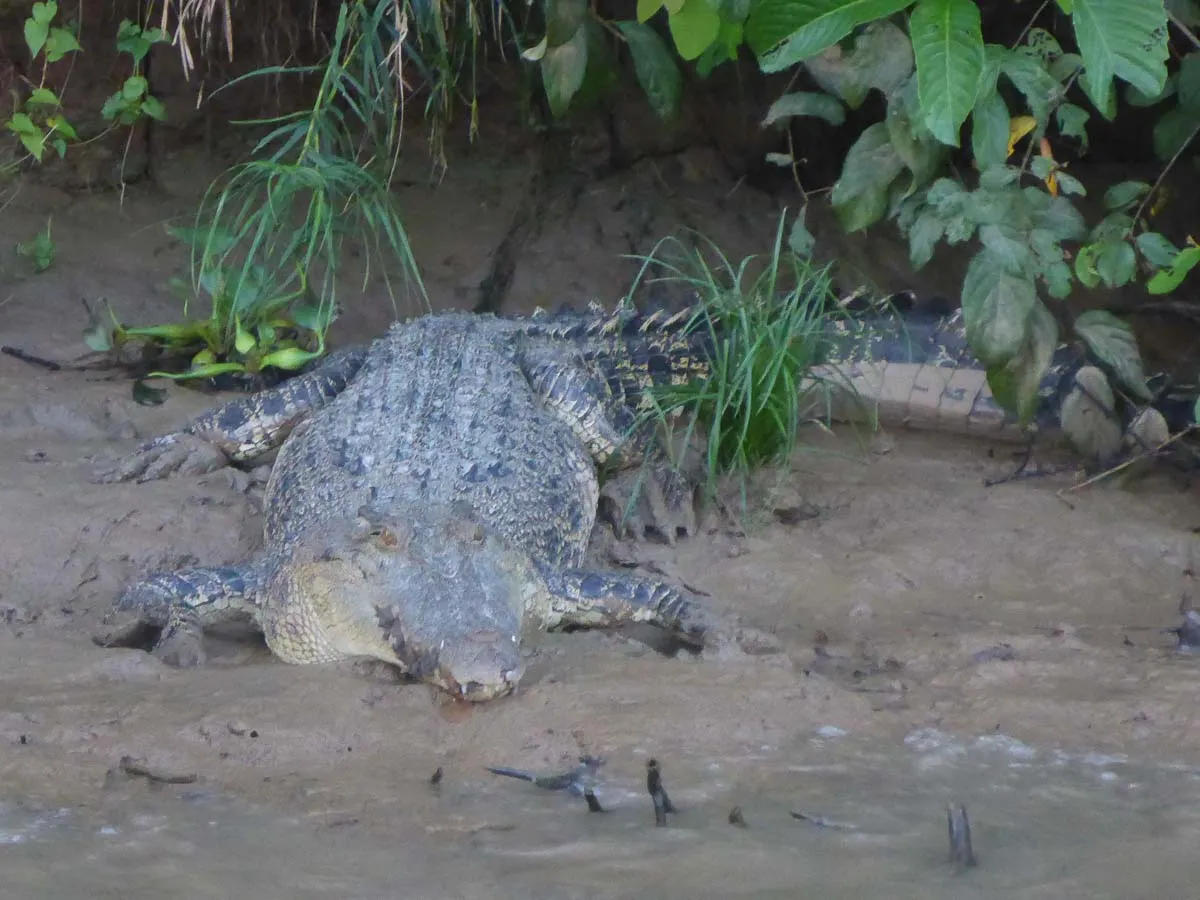
Sadly, one of the reasons you are highly likely to see wildlife on the river is because many animals have been forced into this small corridor of protected land. Now I’m no eco warrior, in the past three months I have been on twelve flights and I have just bought two bottles of water and carried them in a plastic bag. I have a long way to go before I’m getting invited to any green peace party. However, it is clear to me that what humans are doing here is wrong. The basic economics of supply and demand tells me that there is no conspiracy; the large corporations are not cutting down the rainforests for no reason, as consumers we continue to demand these products, in this case palm oil. So maybe it’s just a case of educating ourselves to make better choices. Otherwise in a hundred years there may not be much rainforest left to see.

